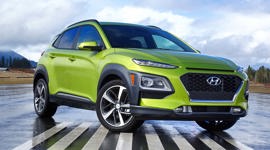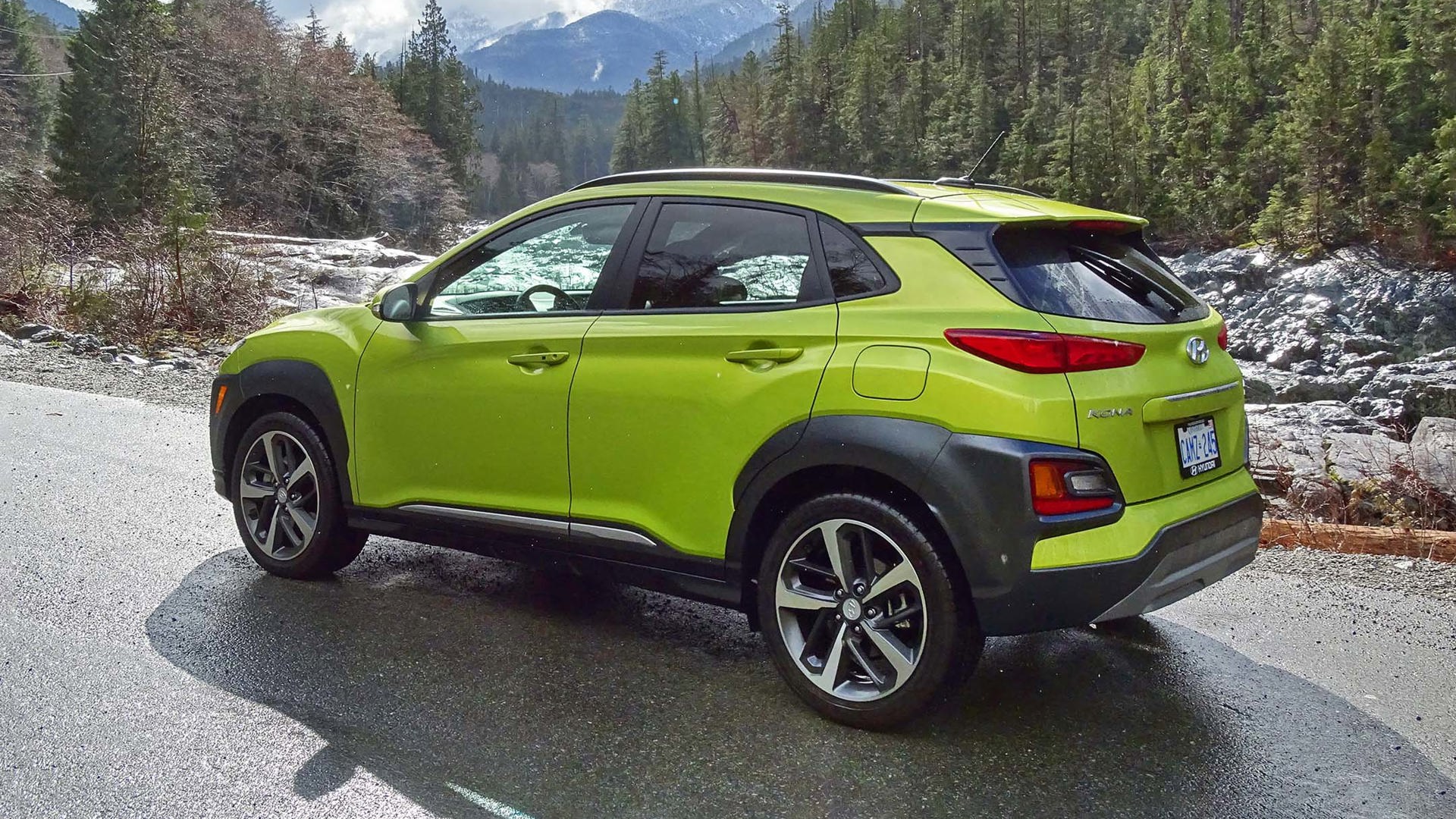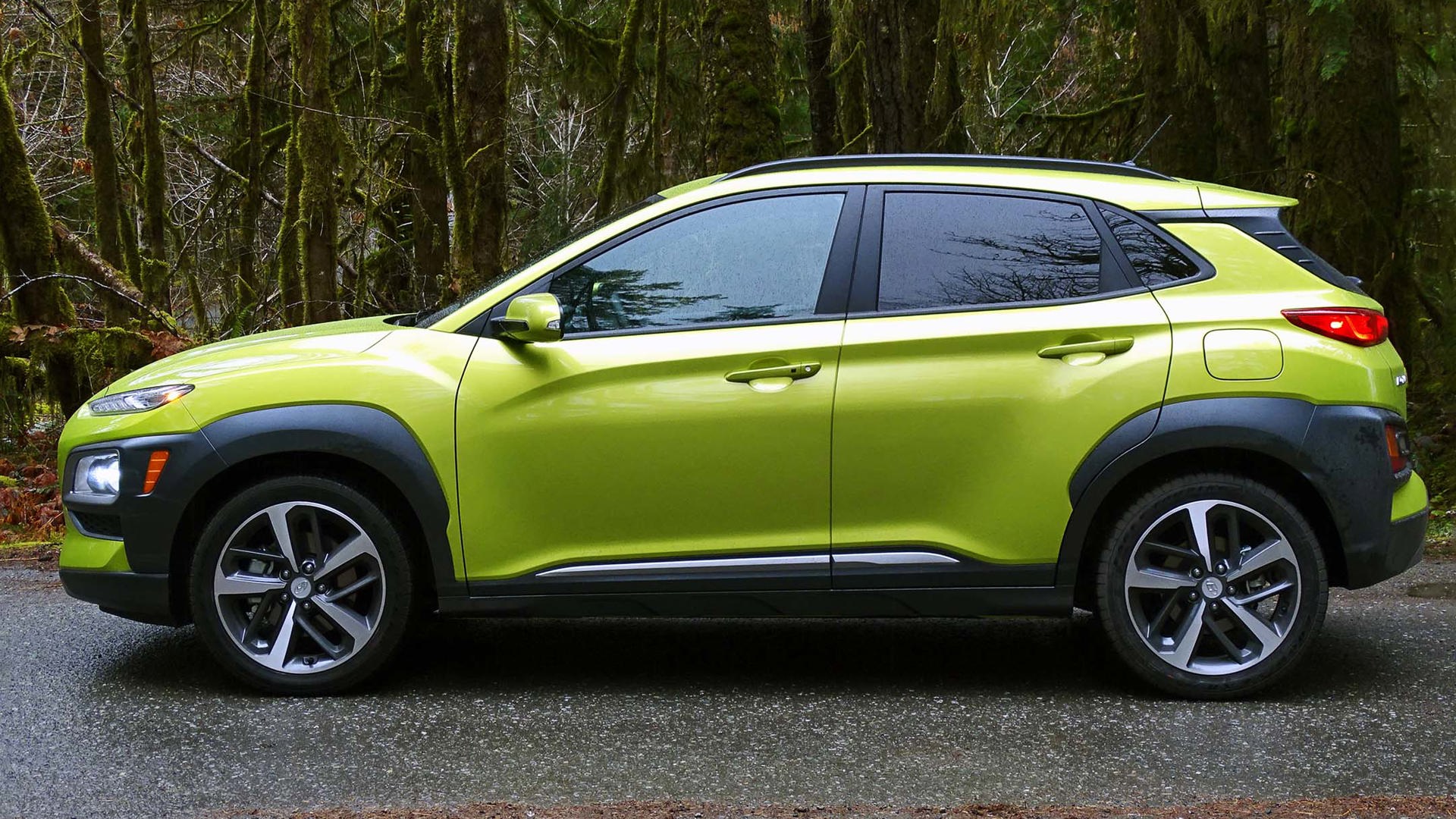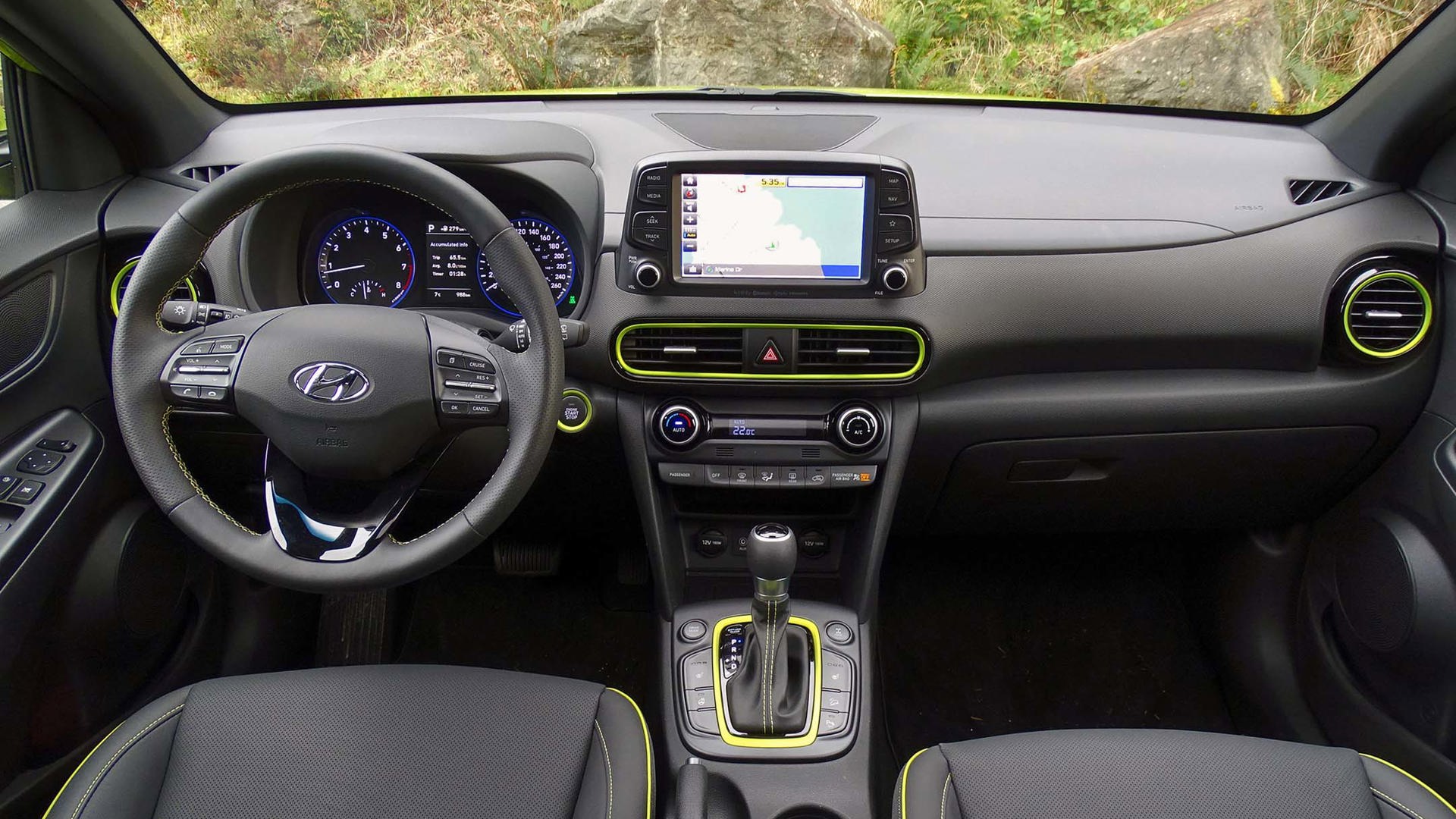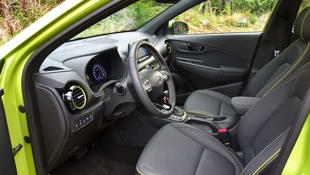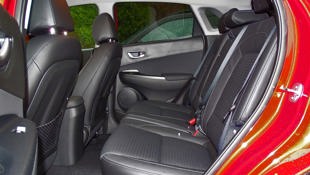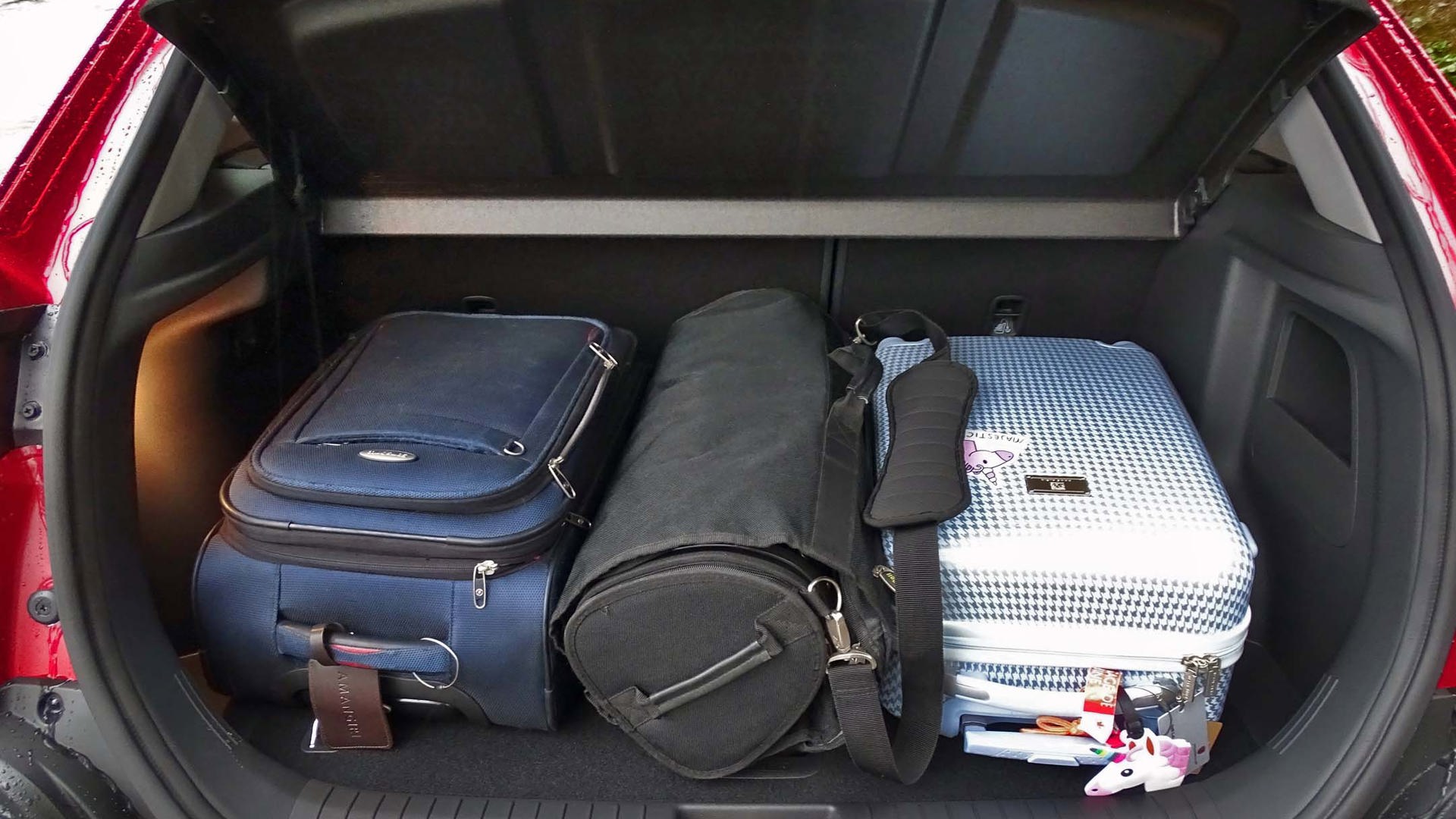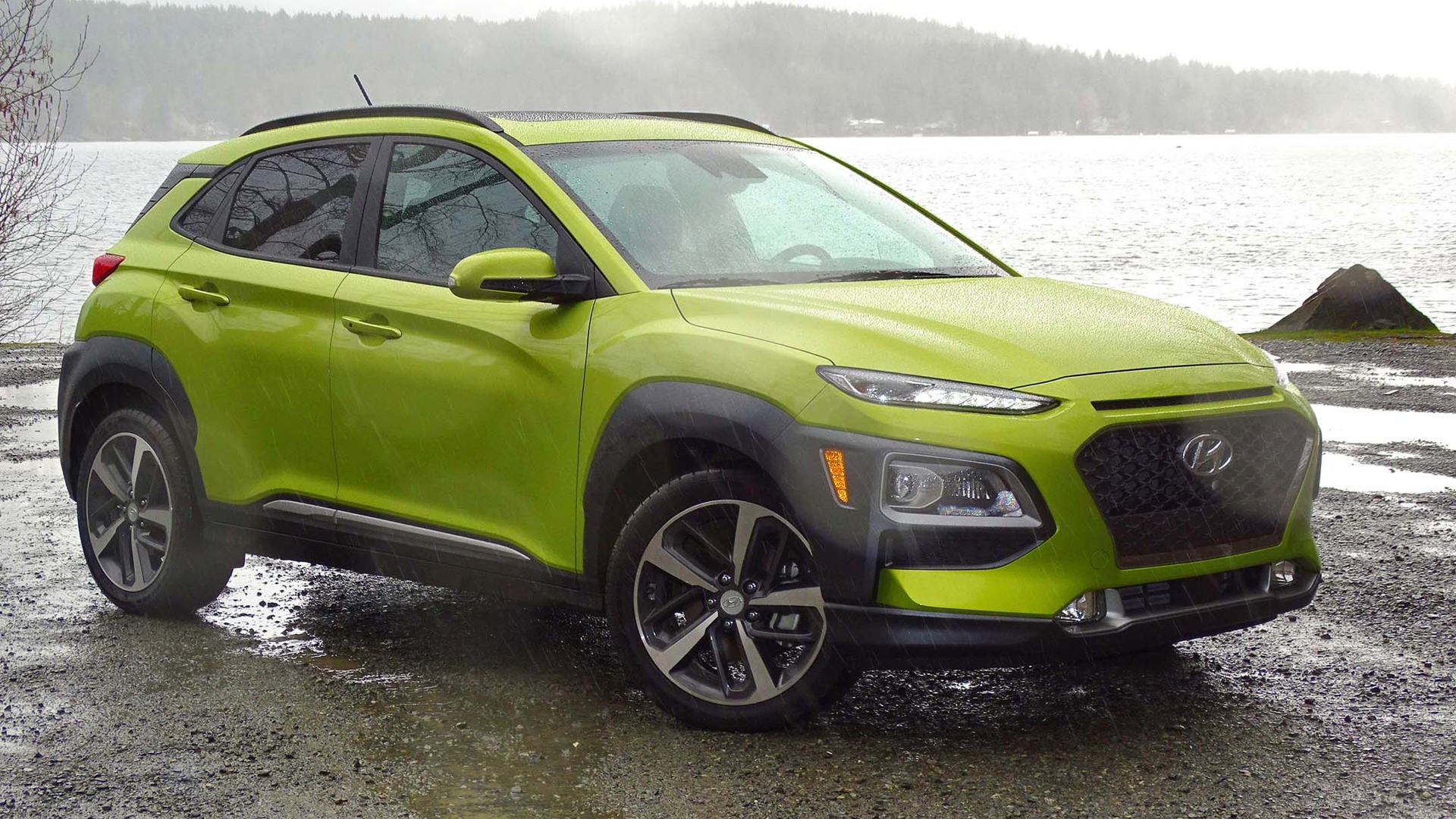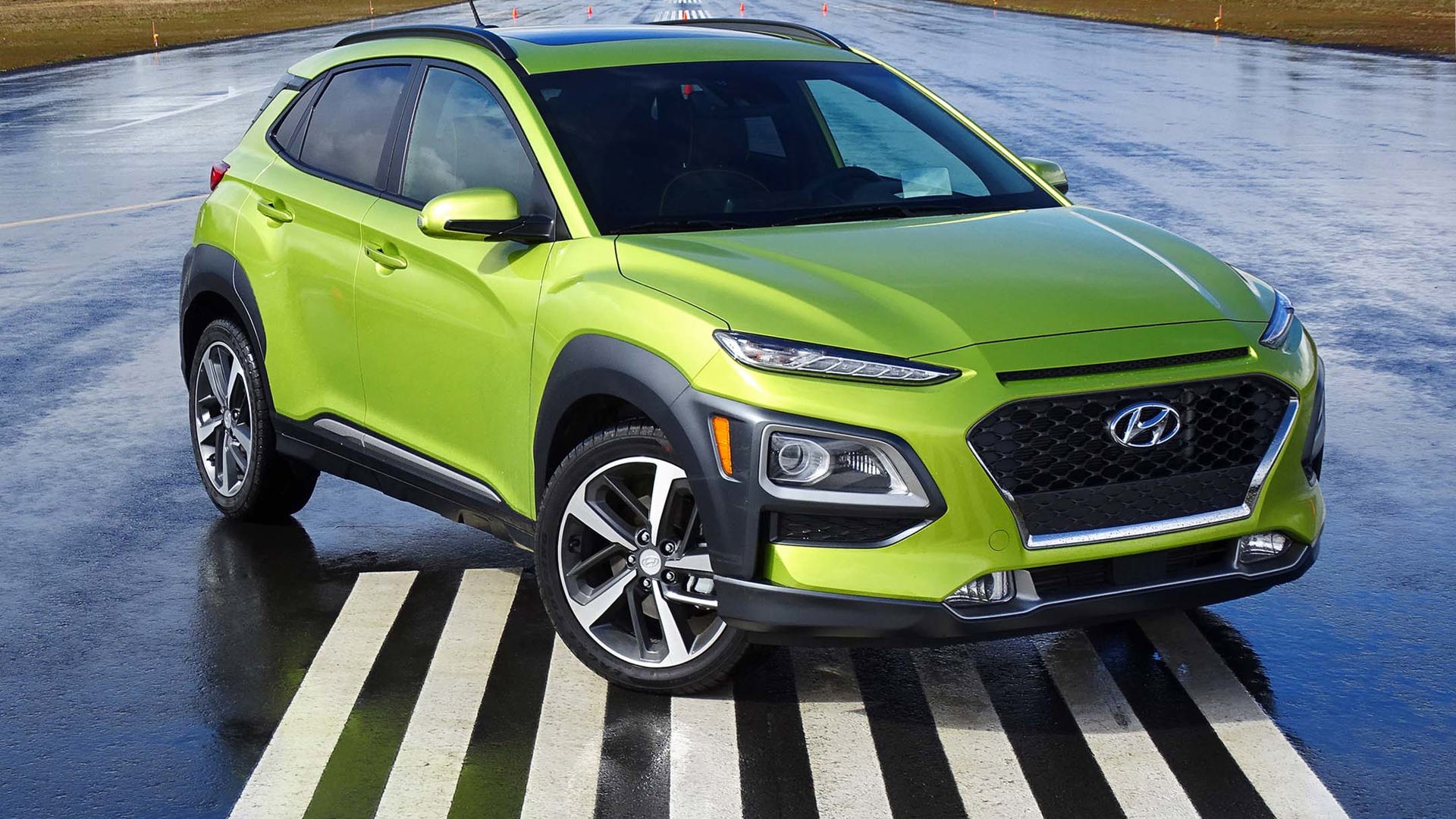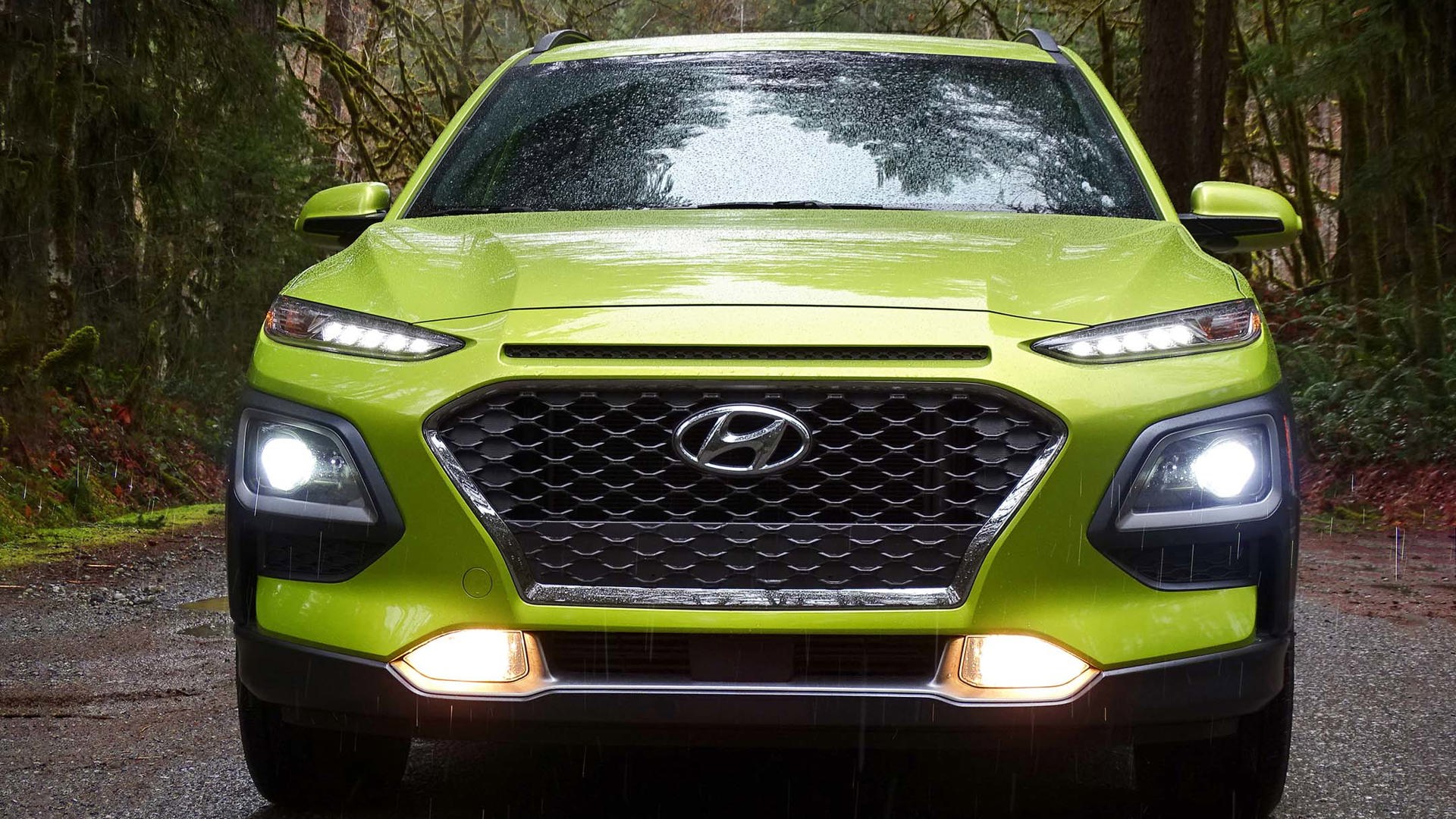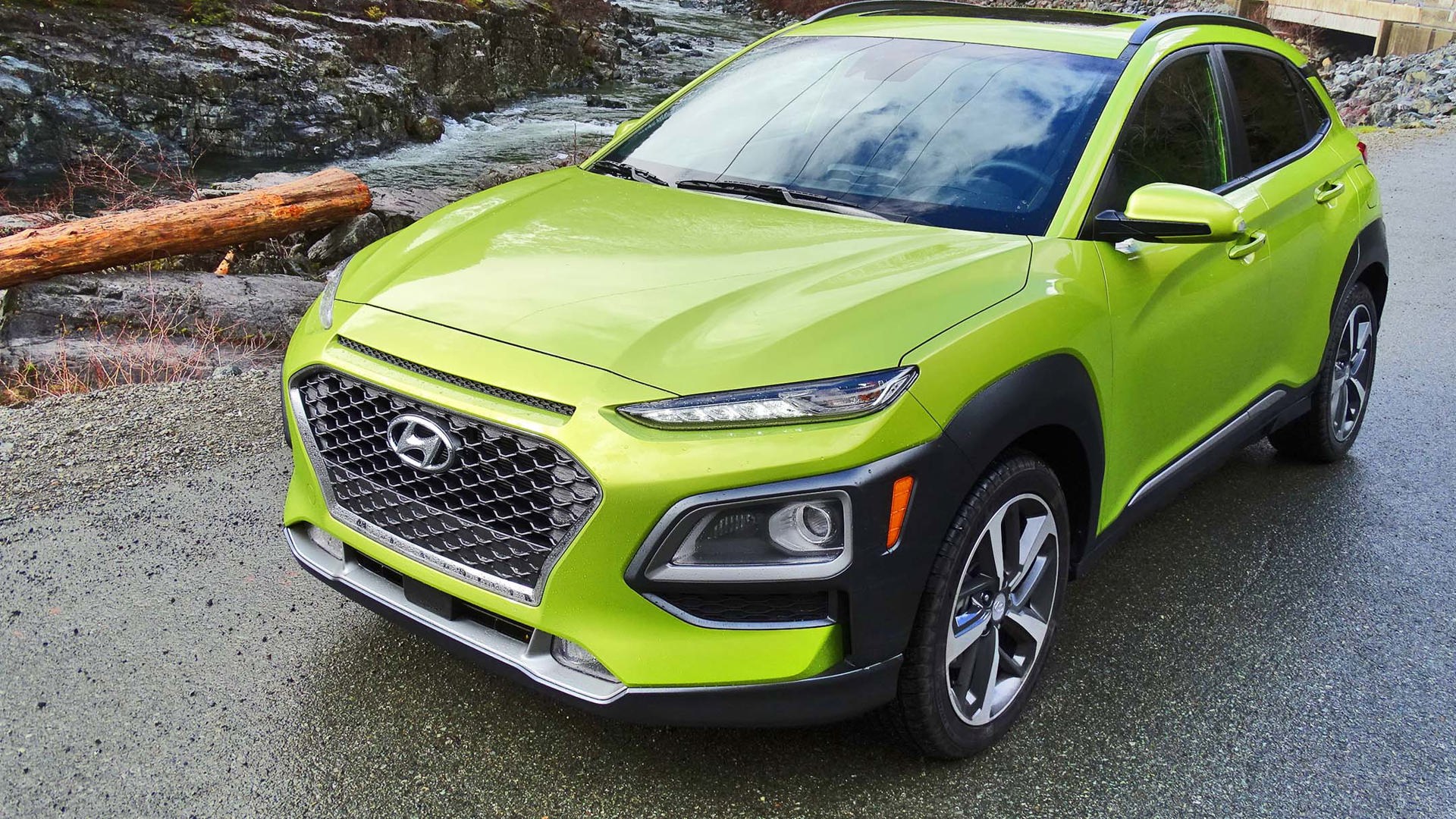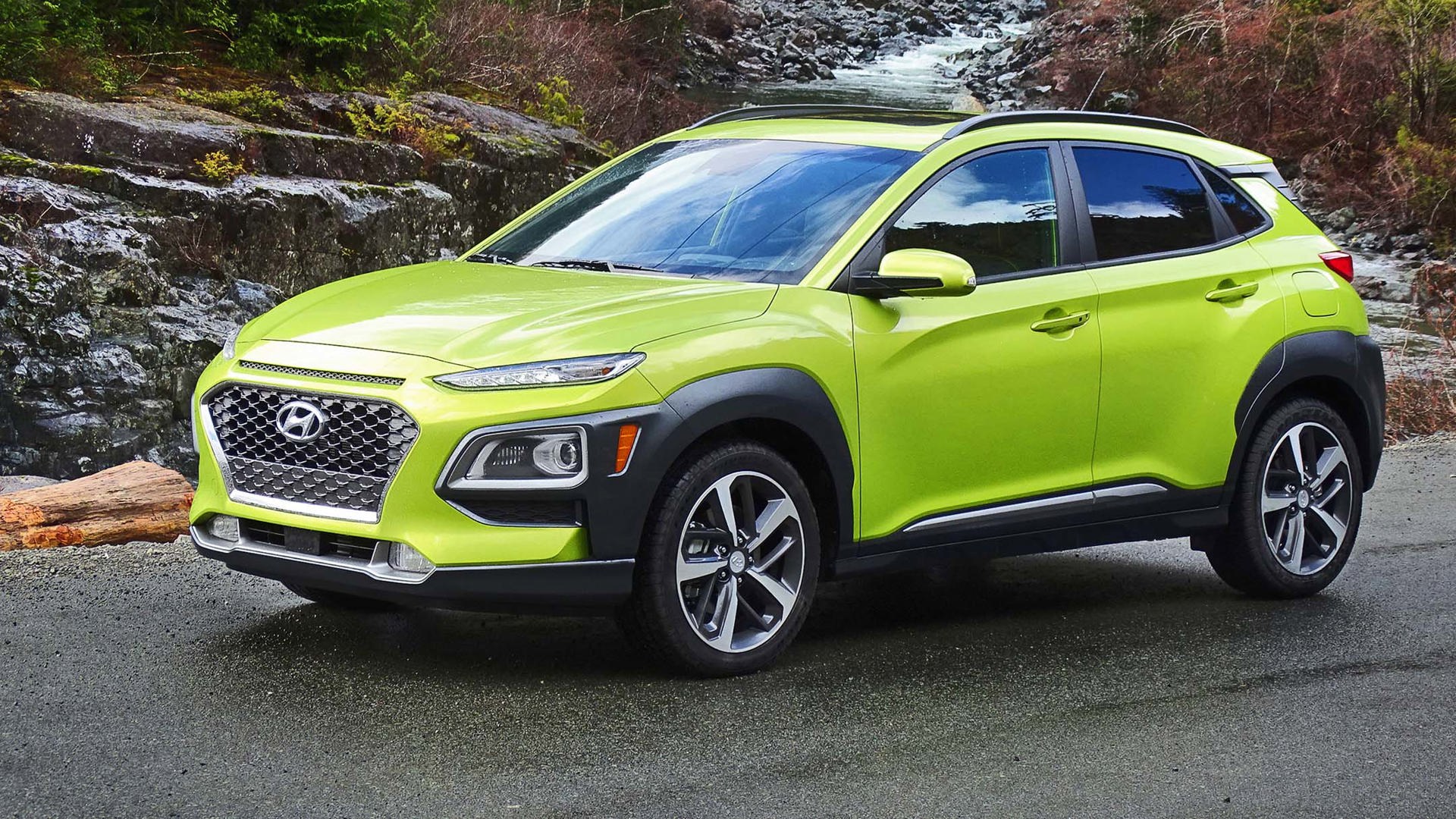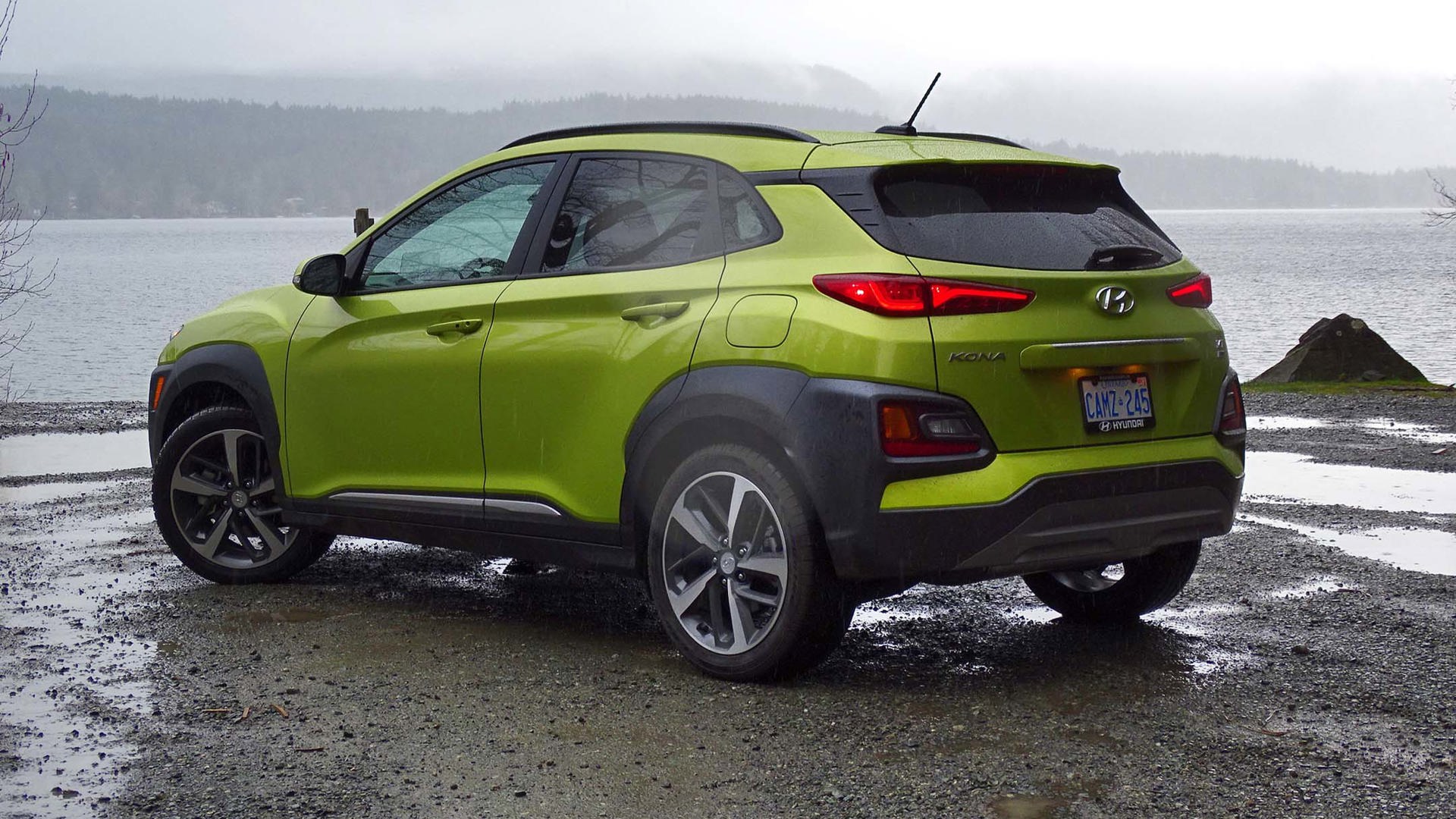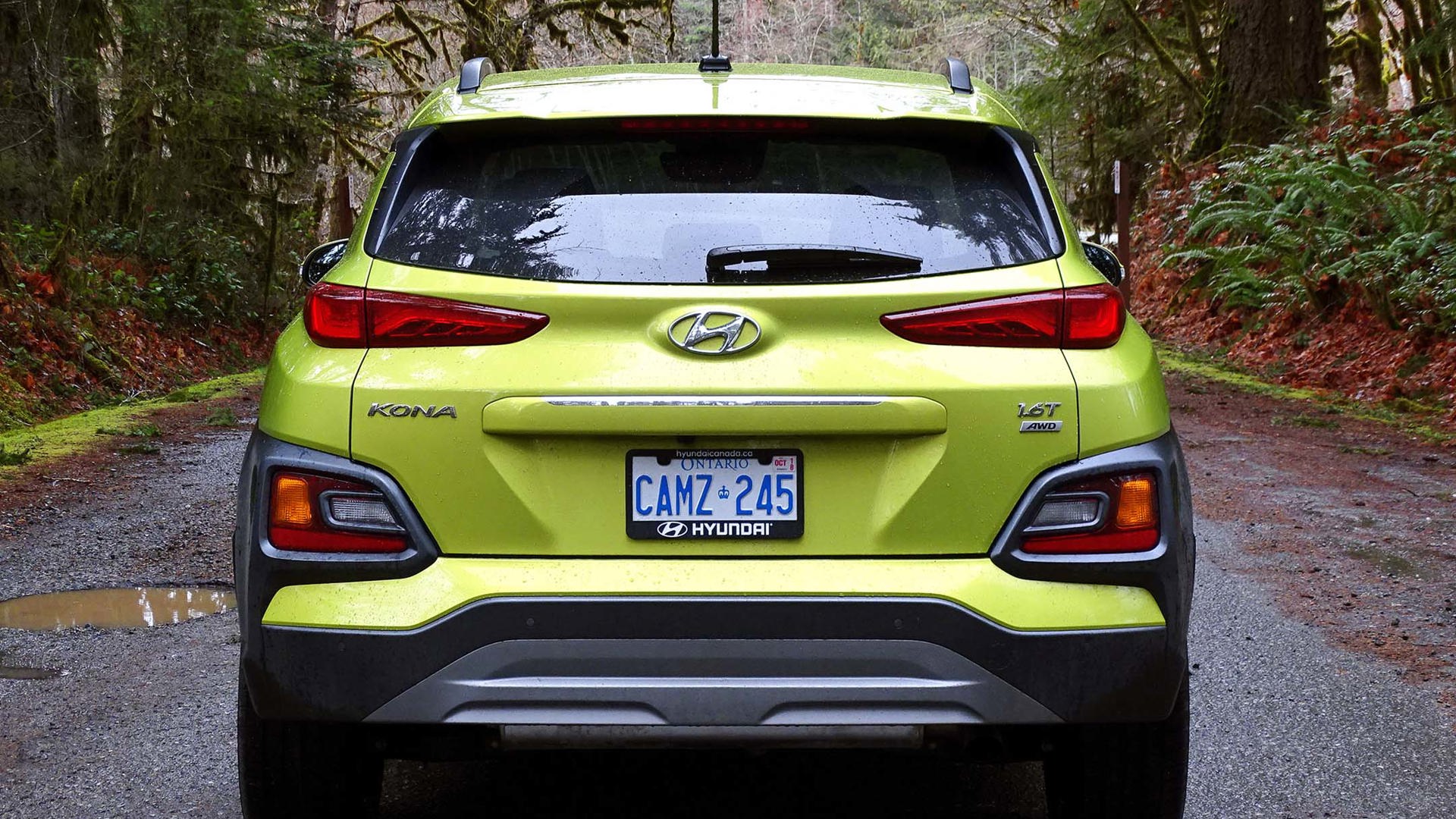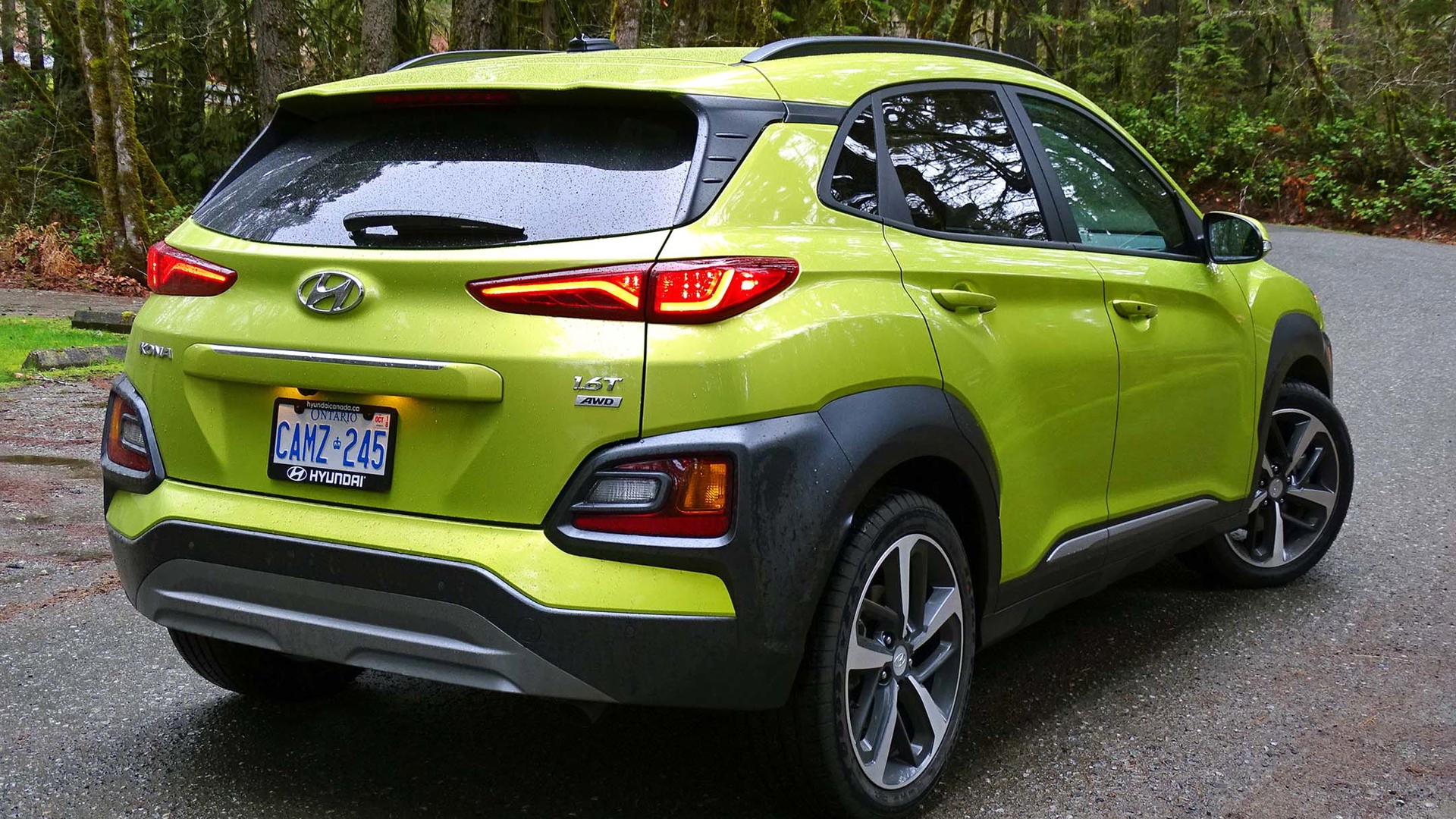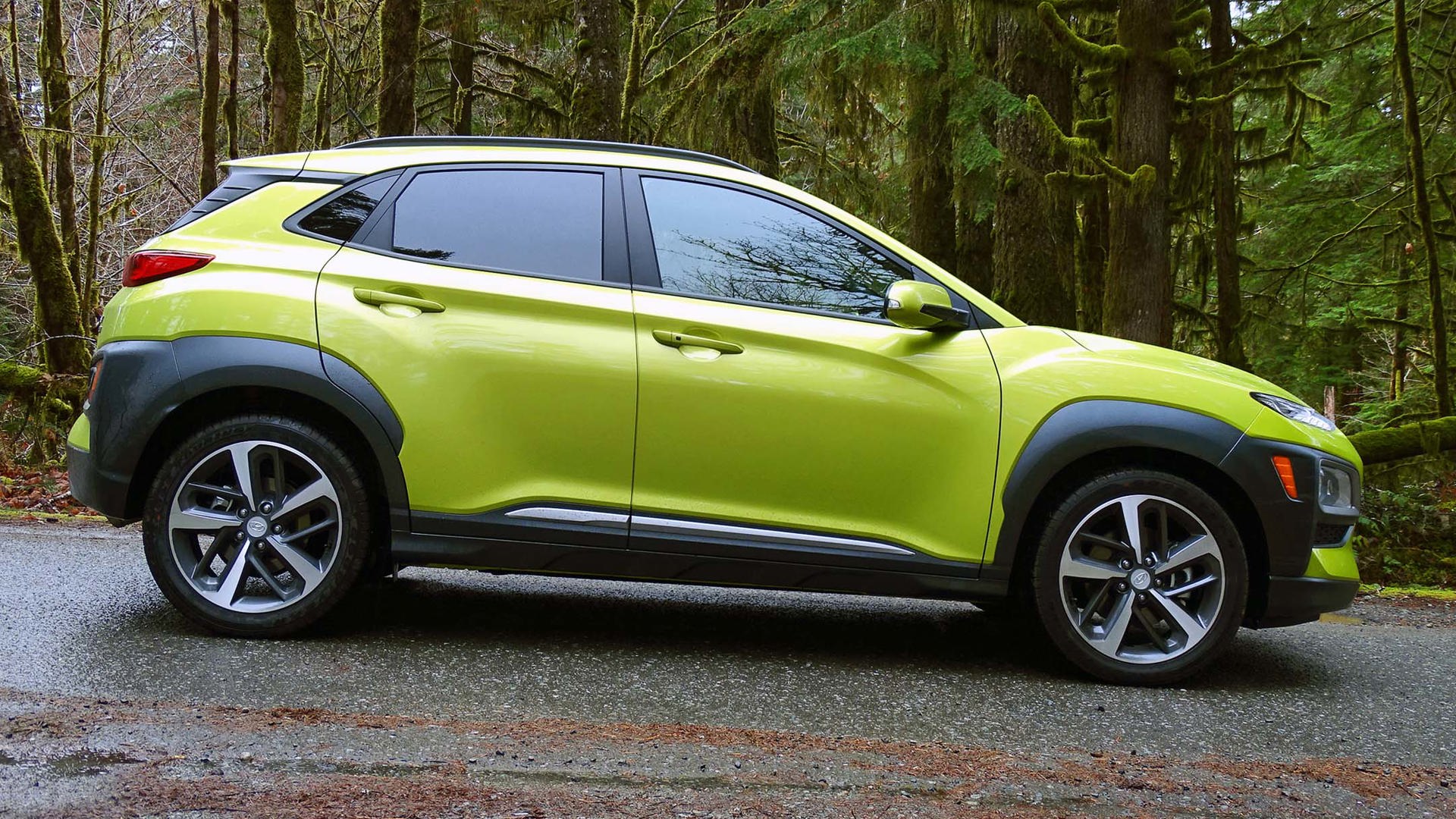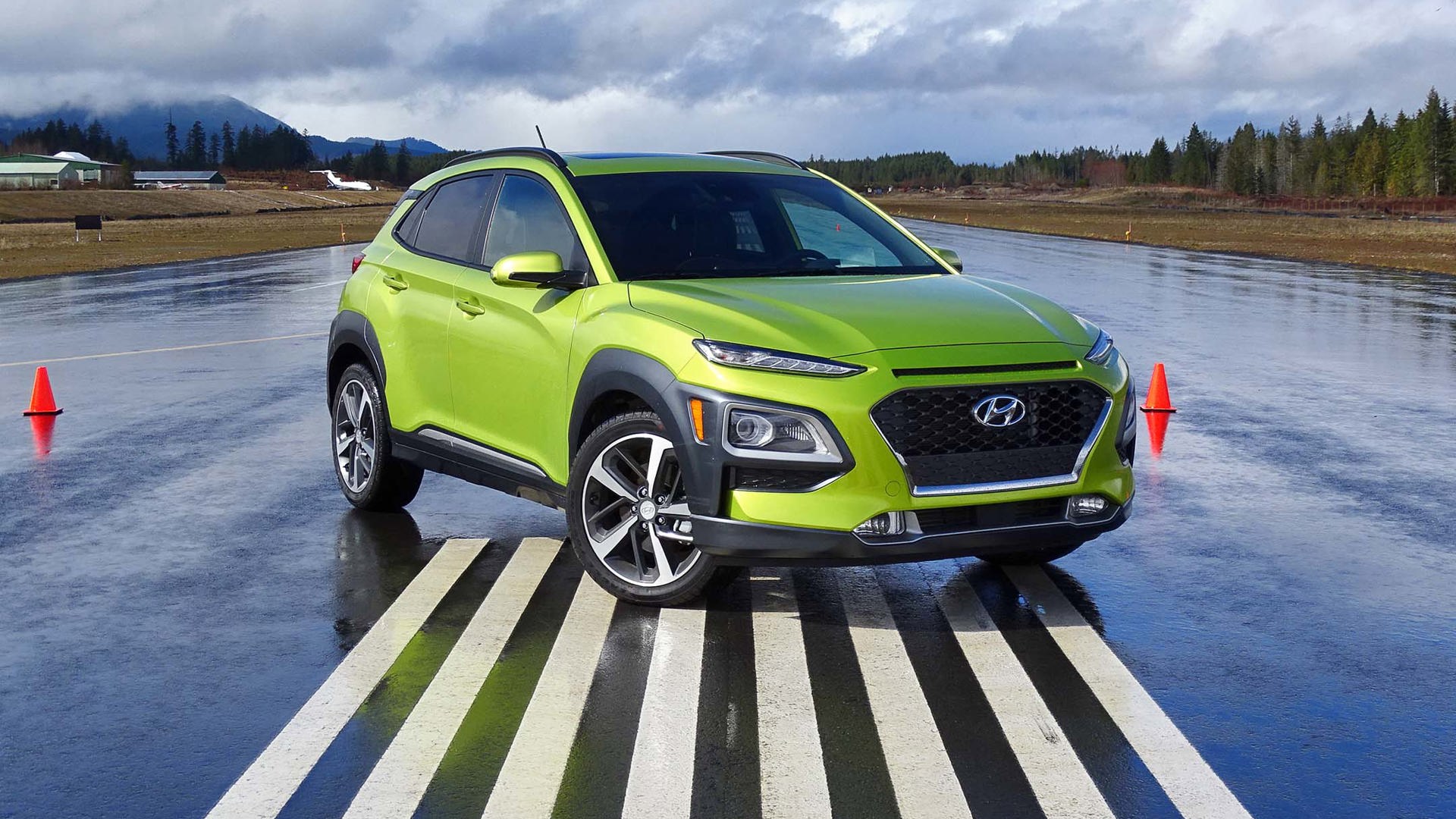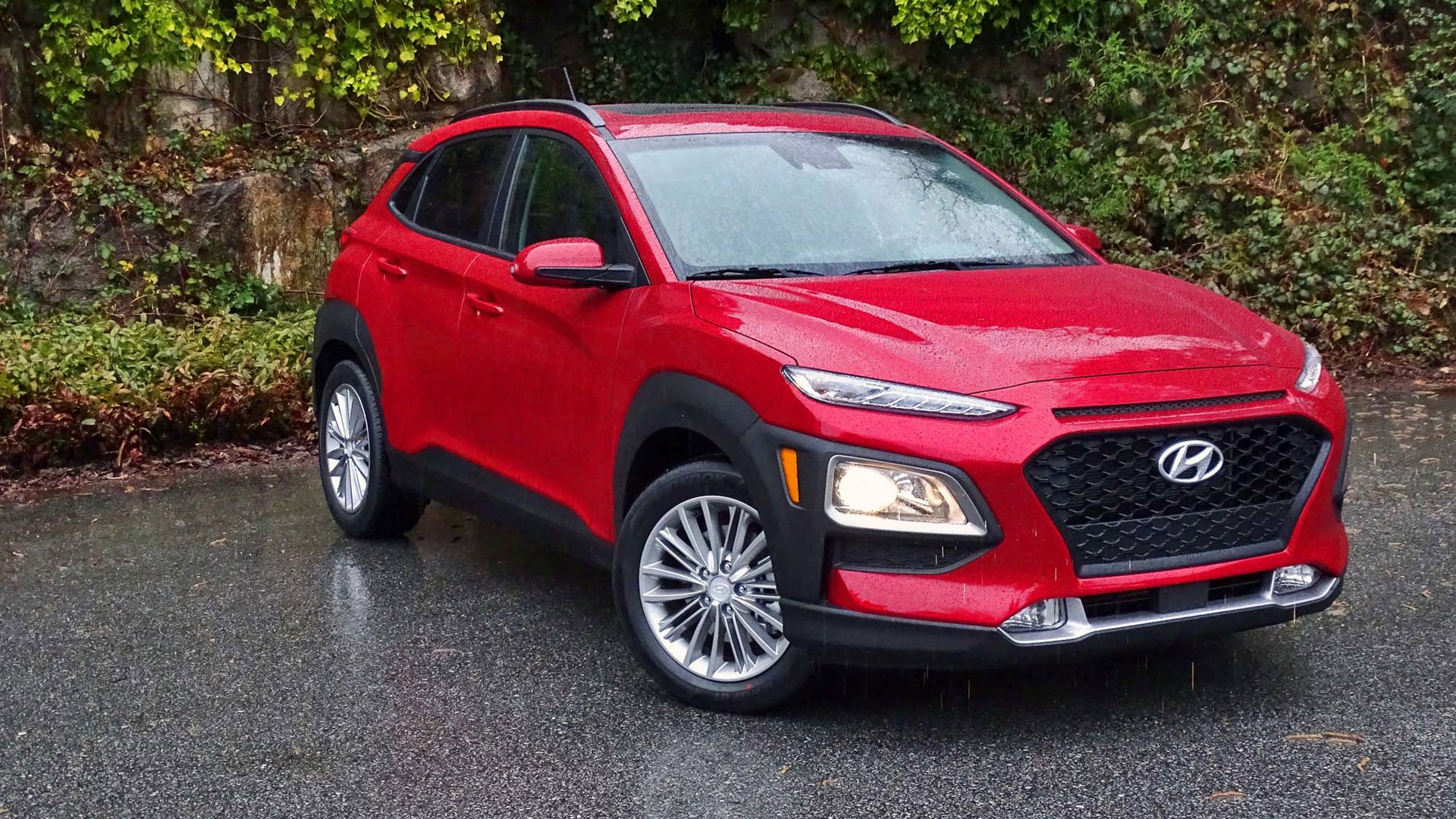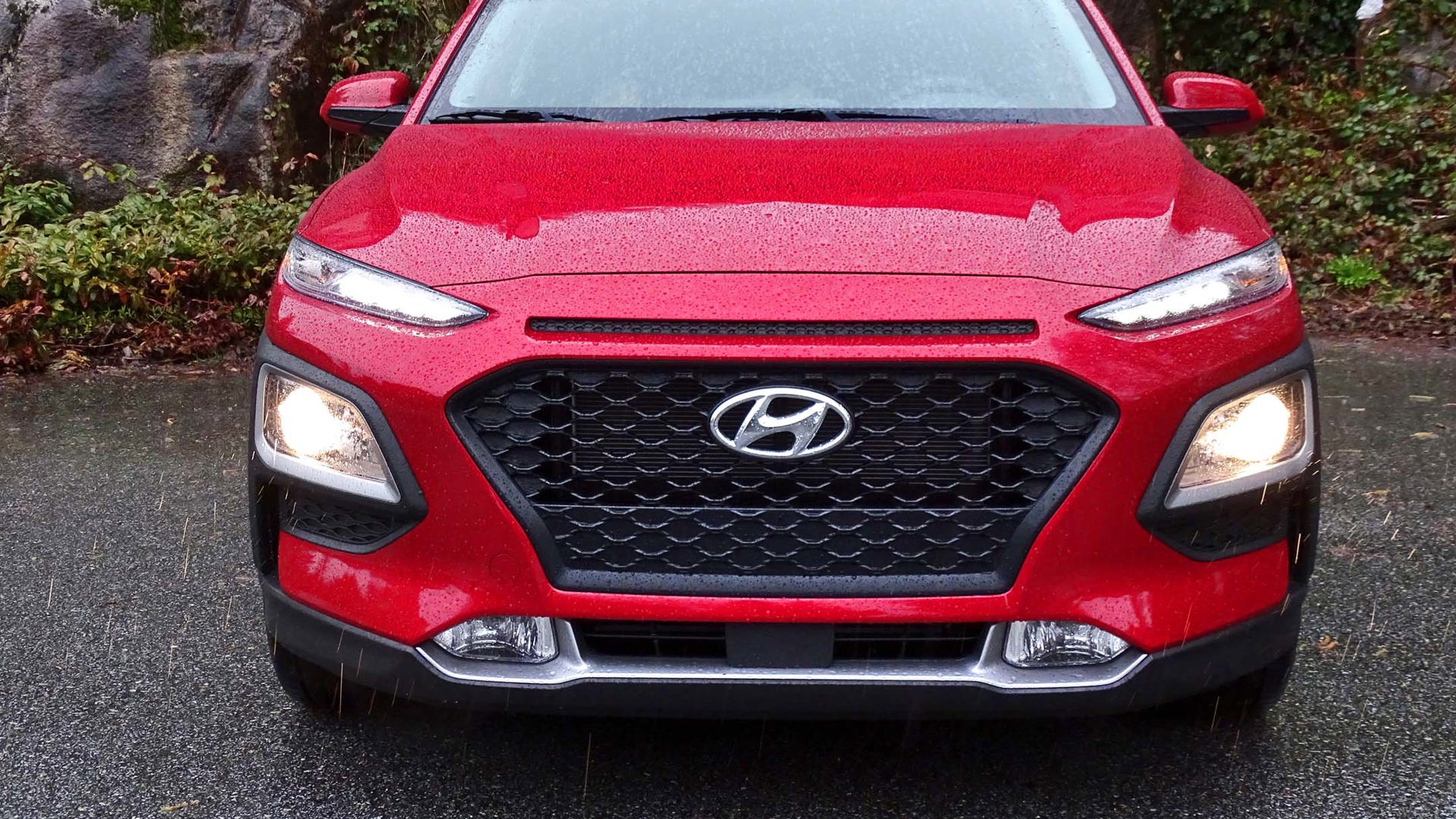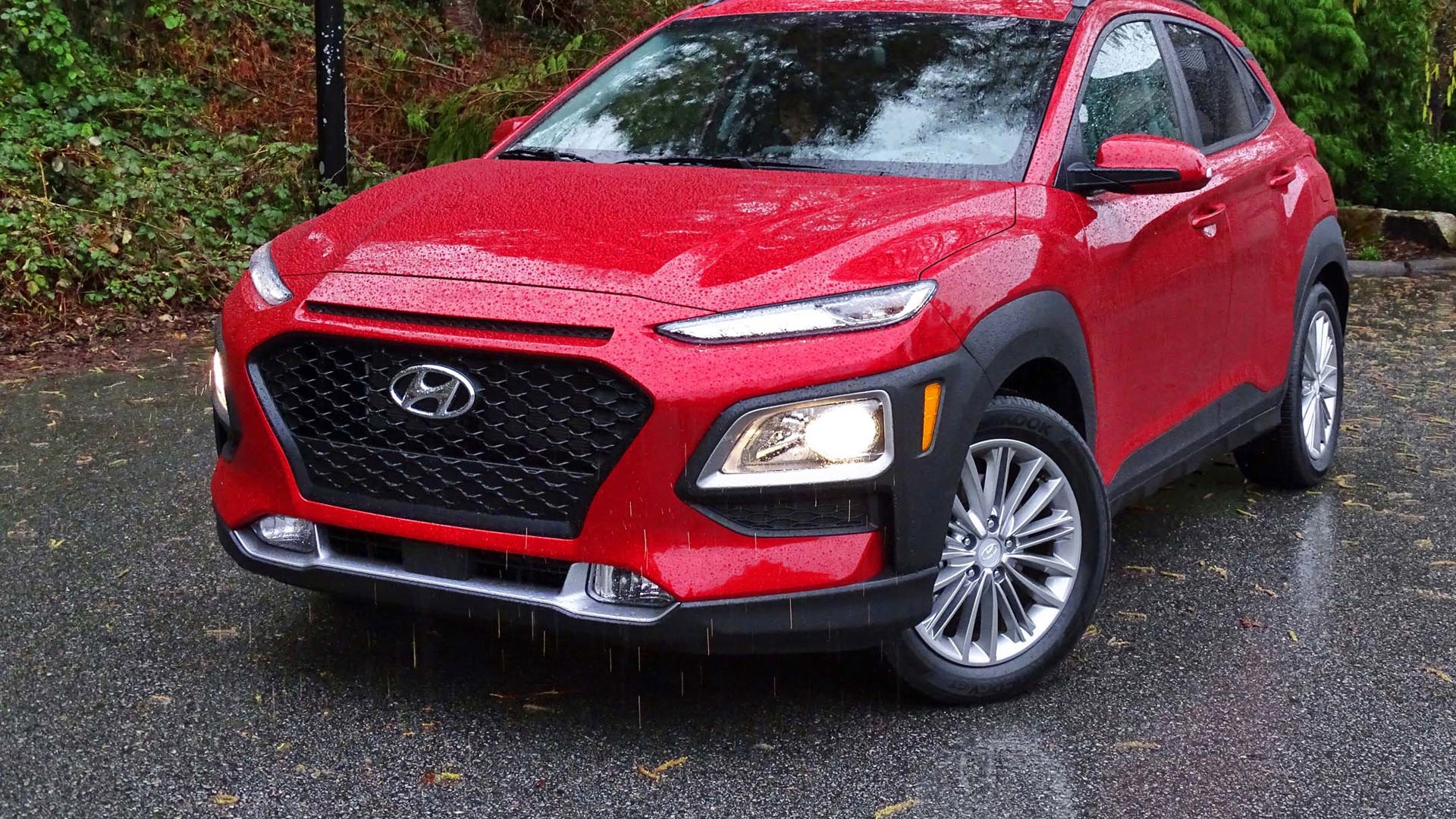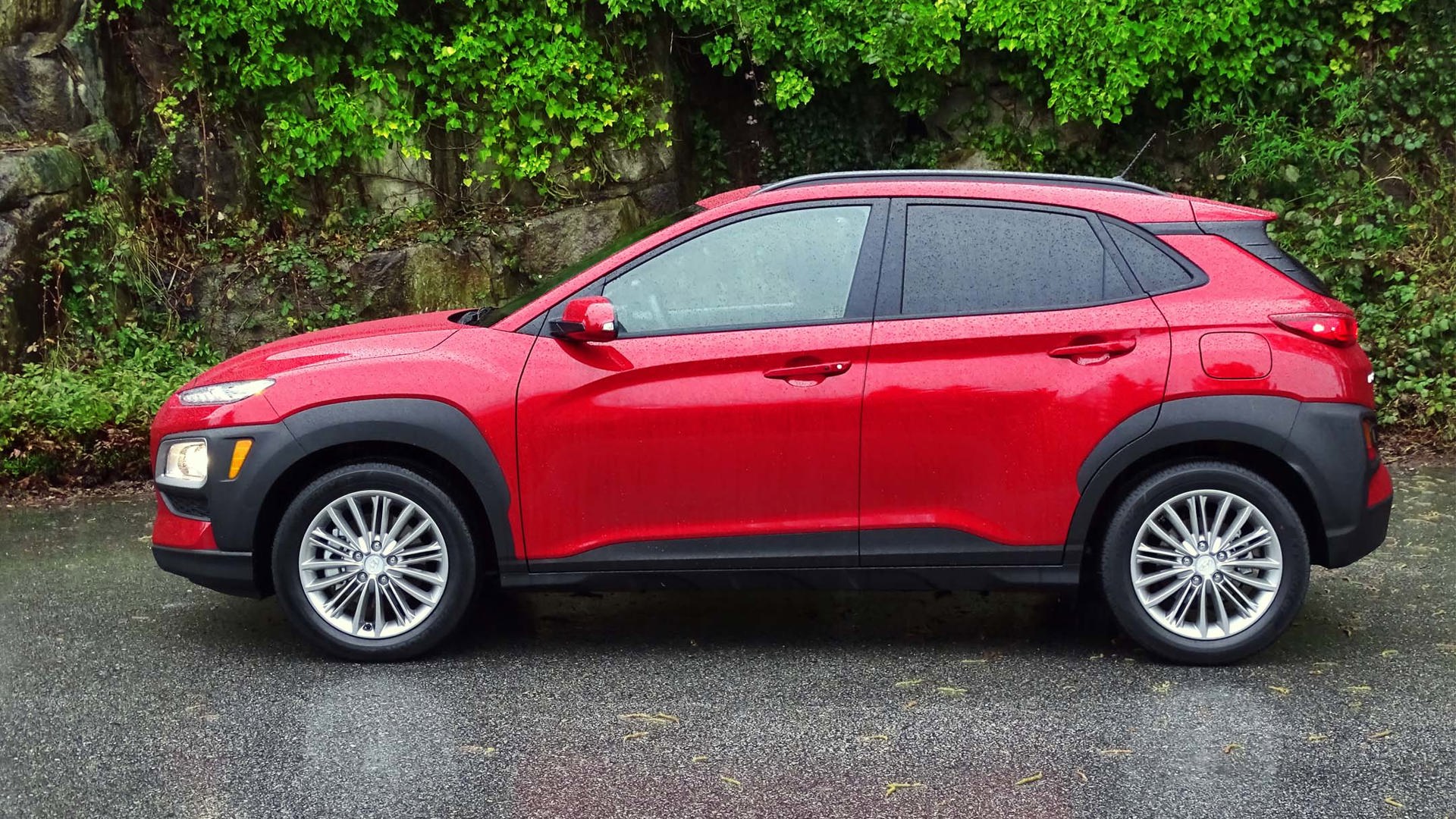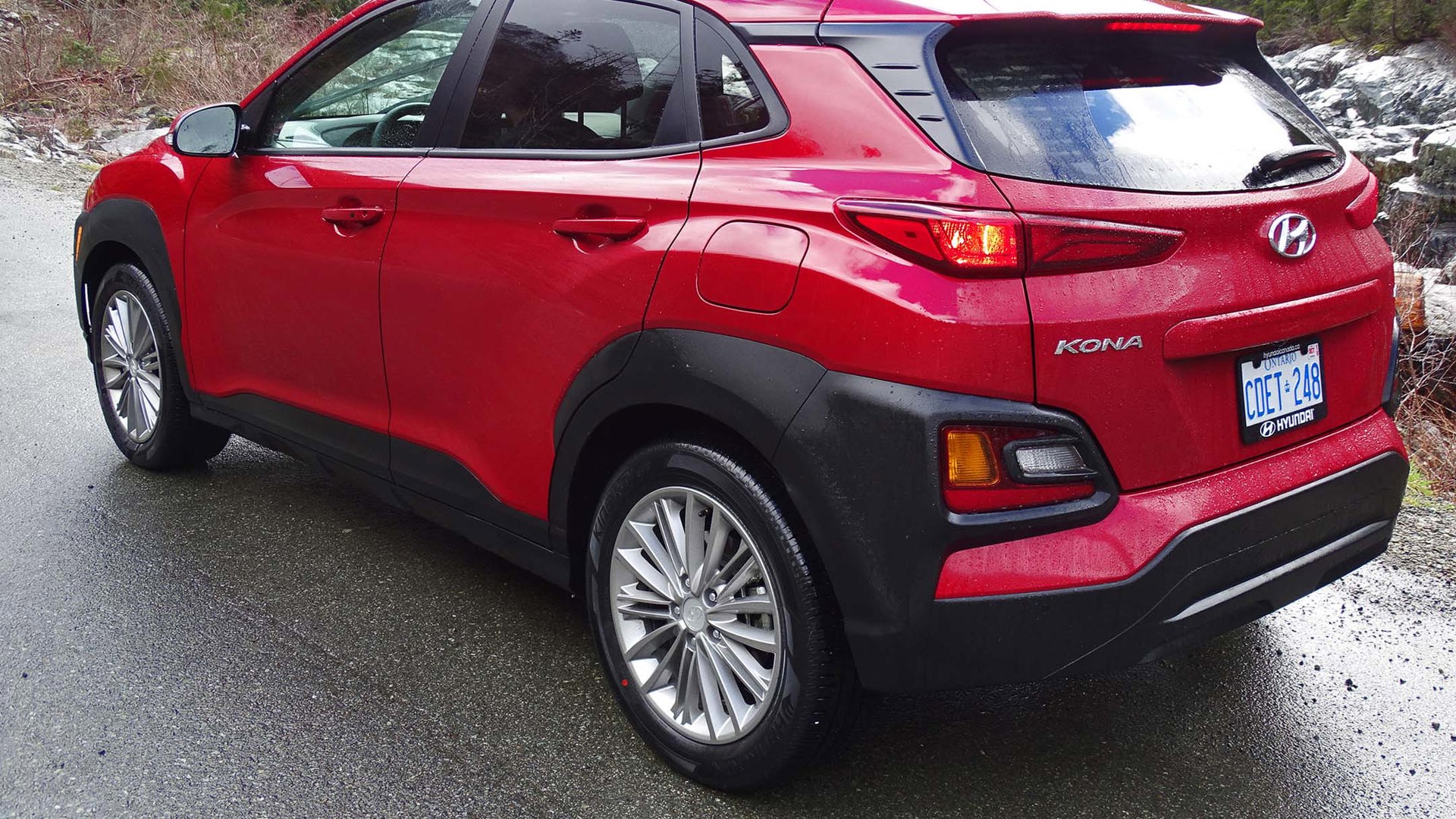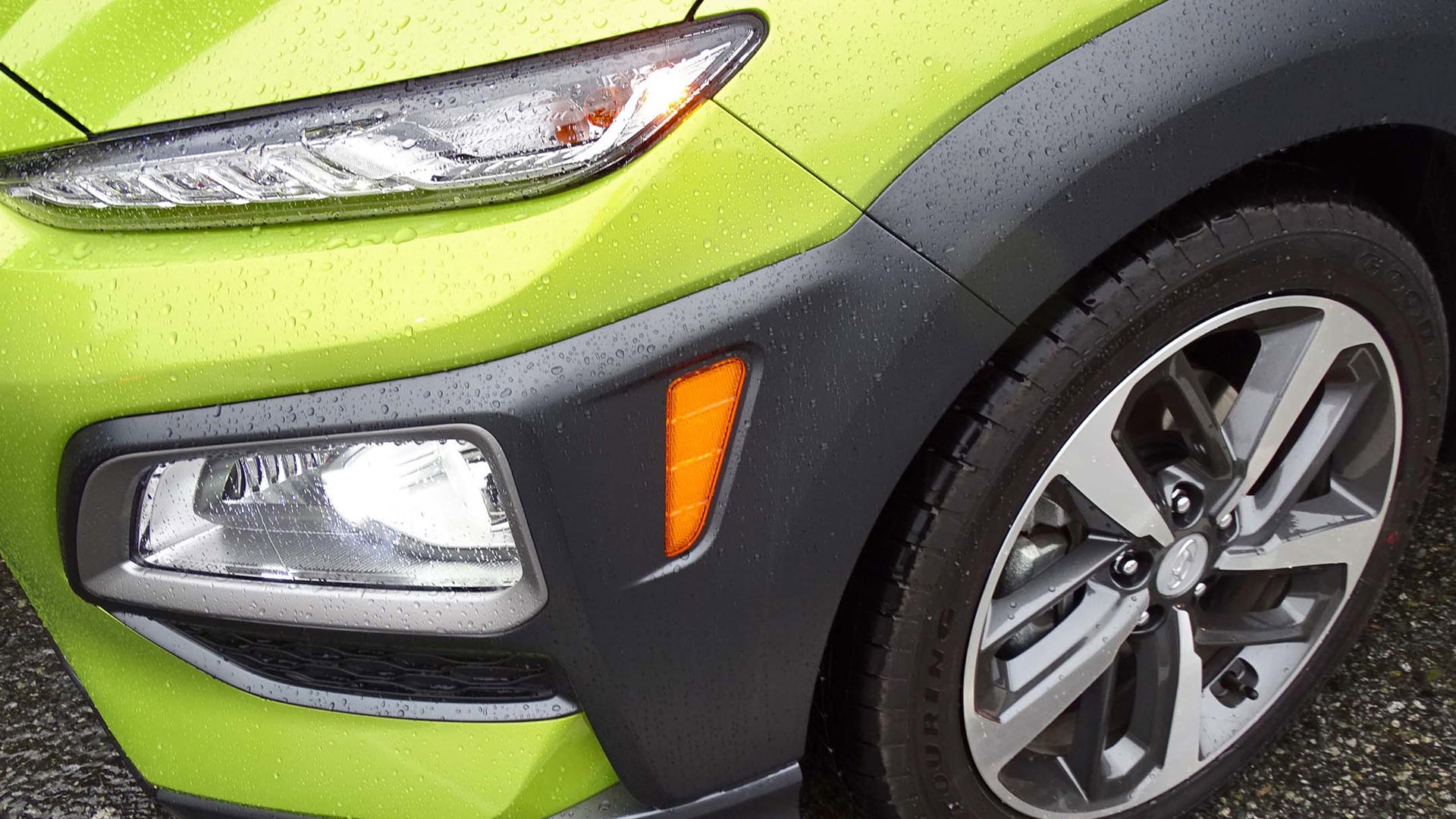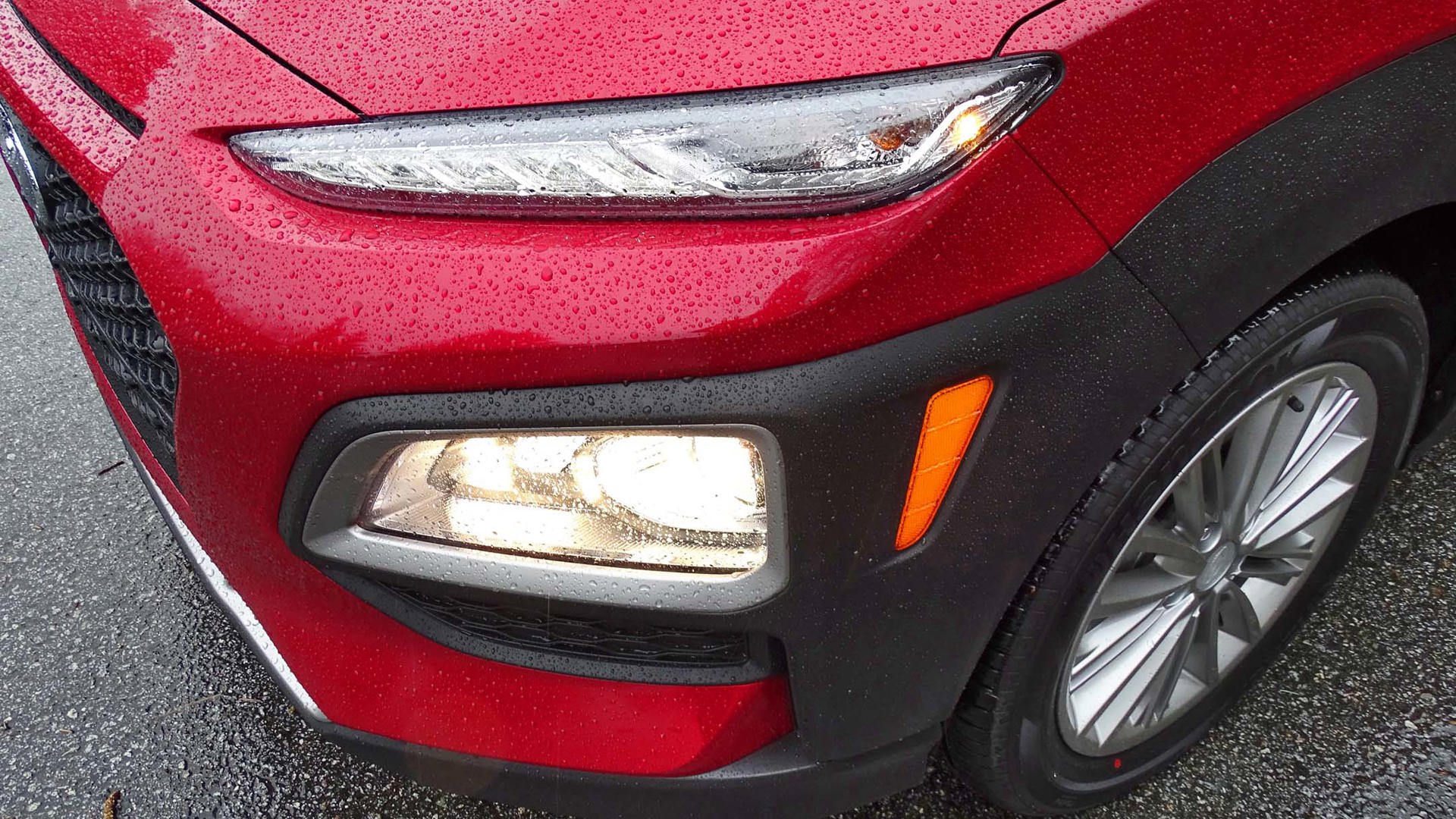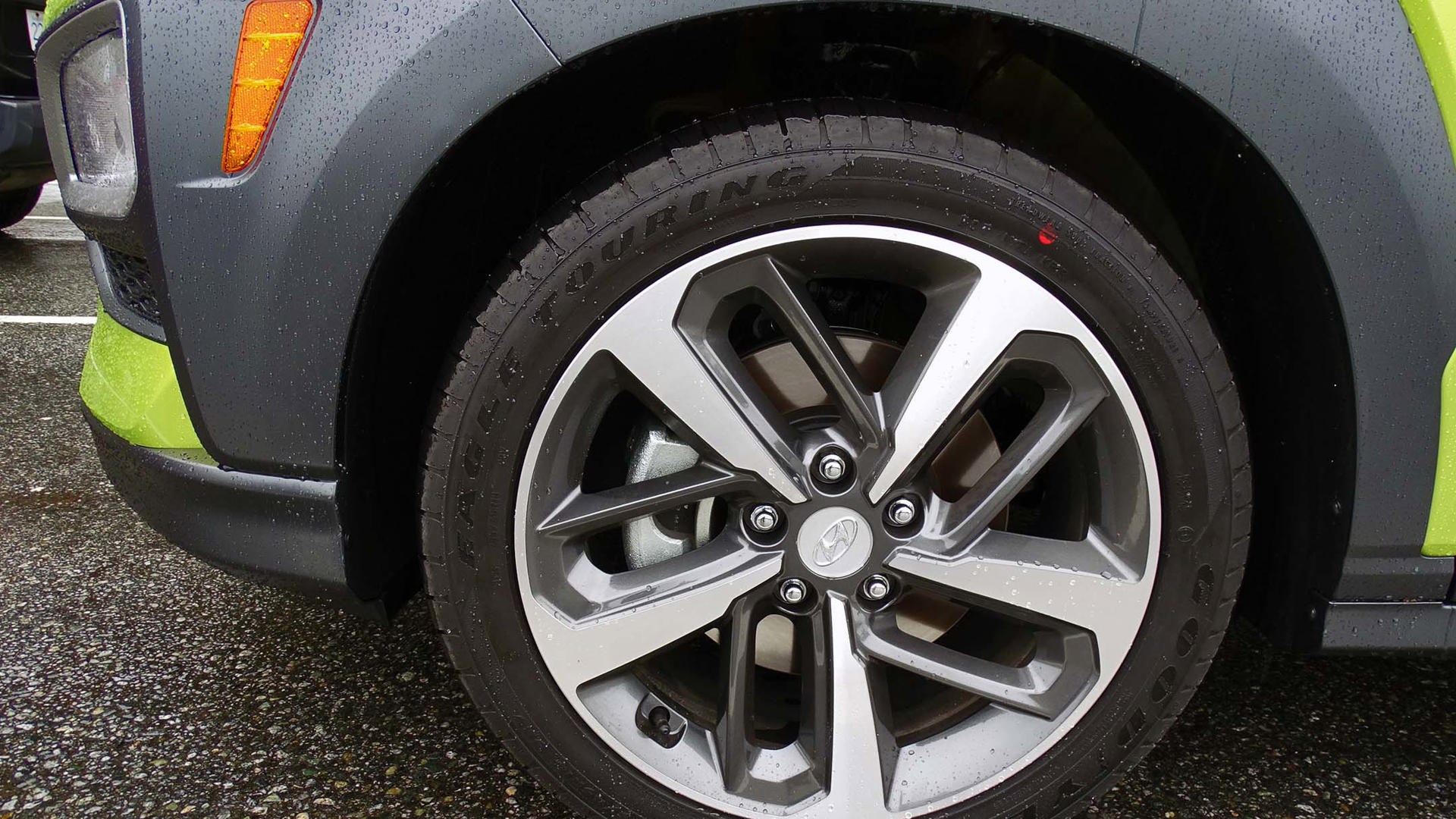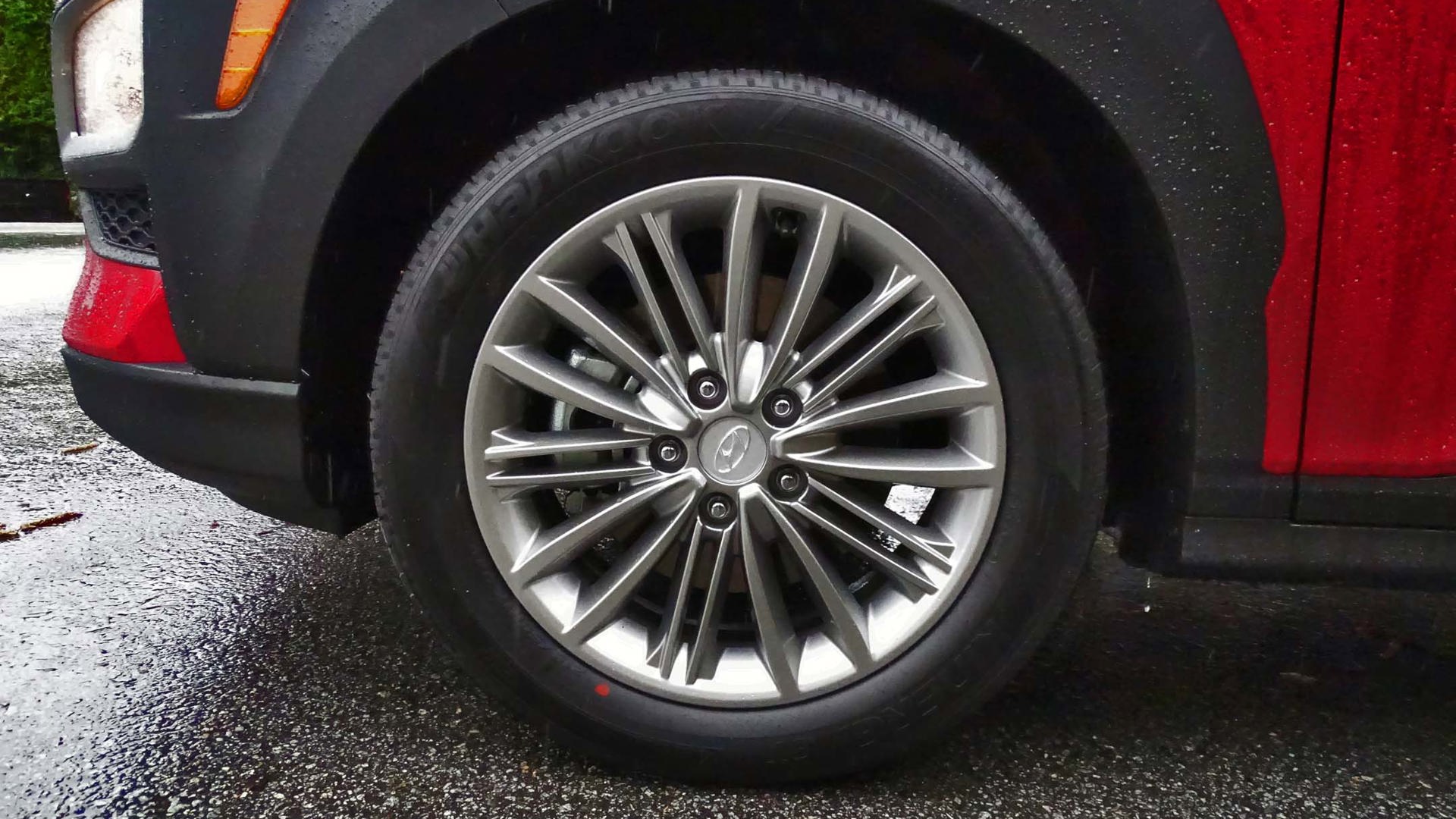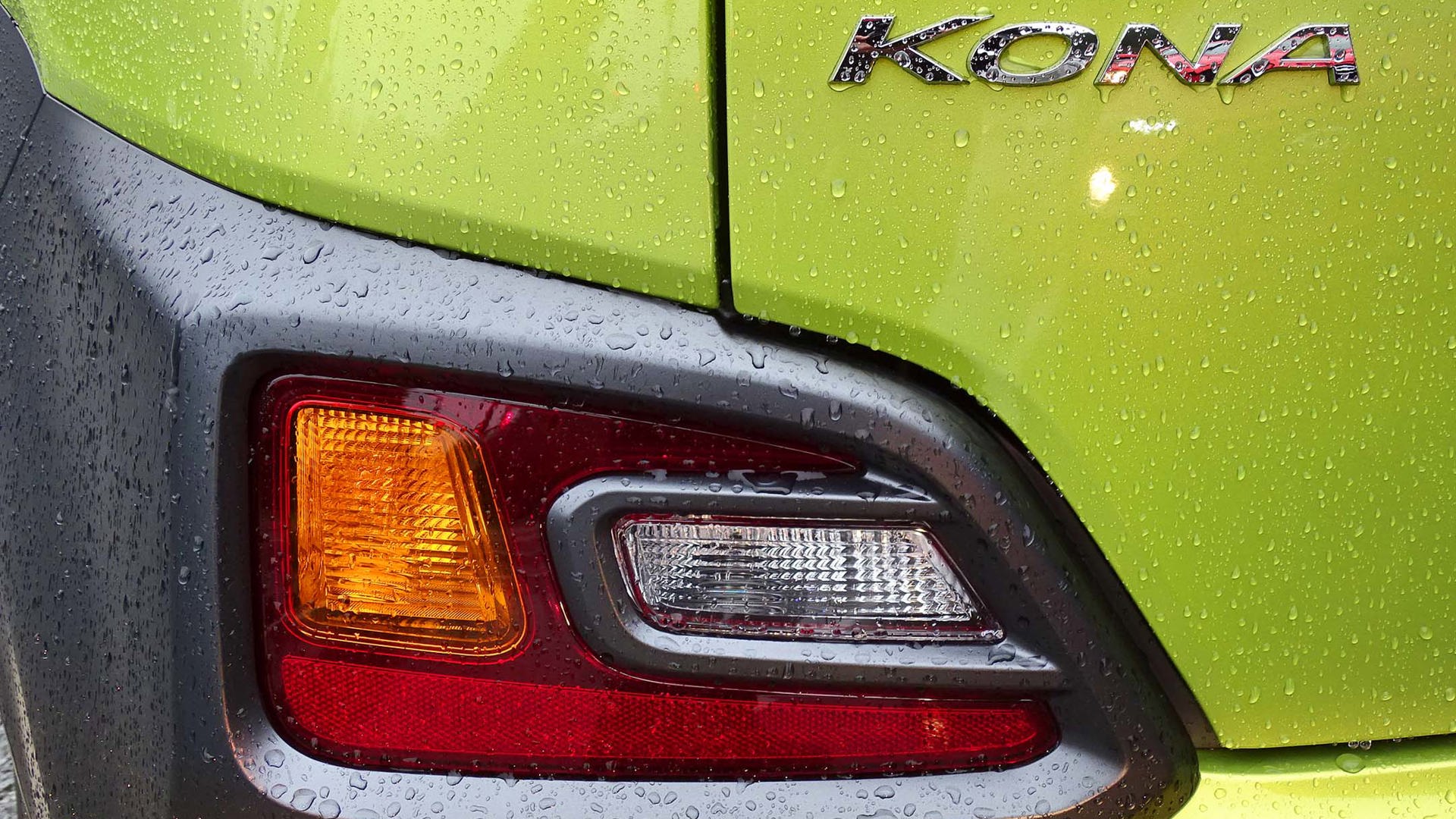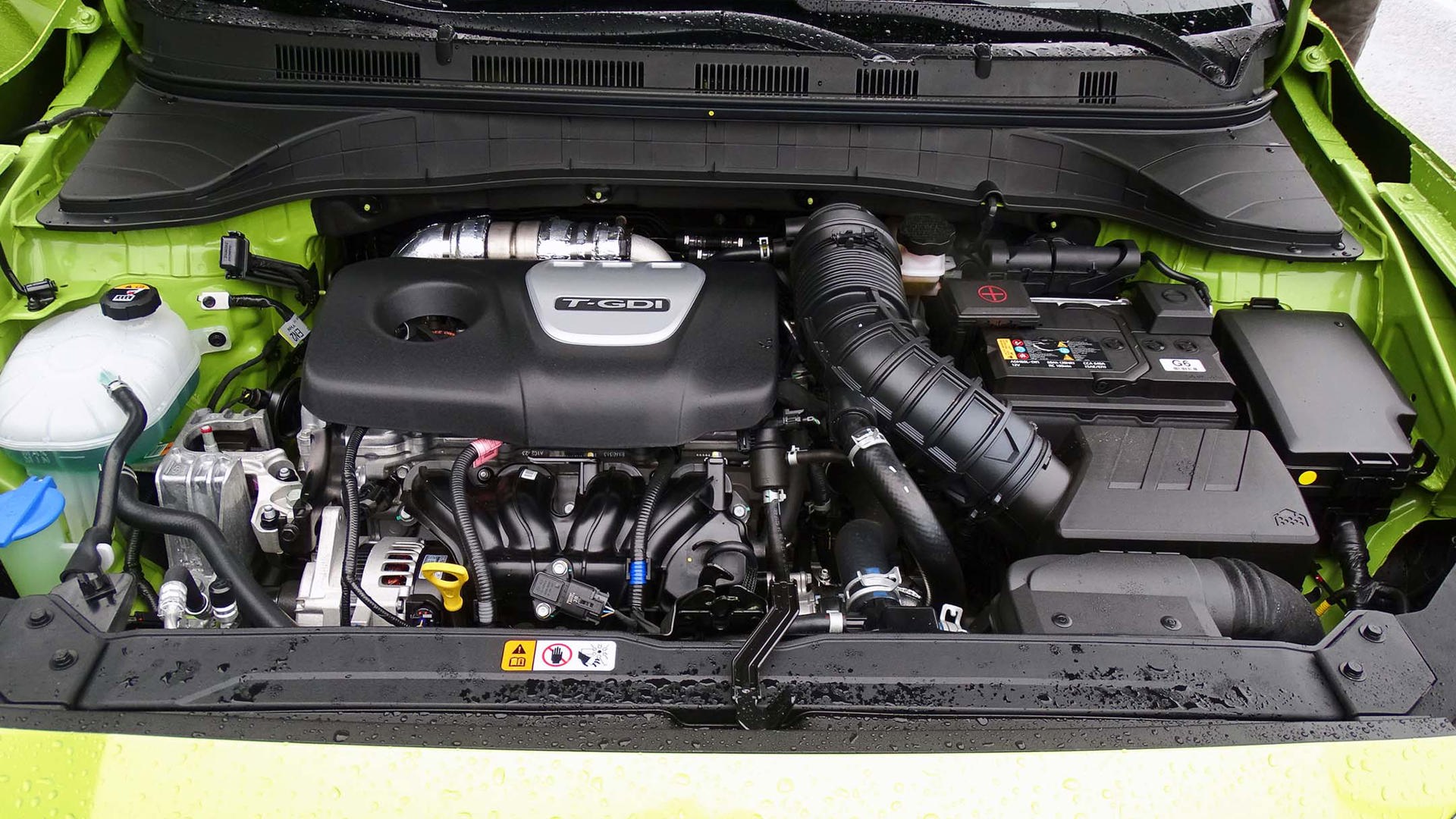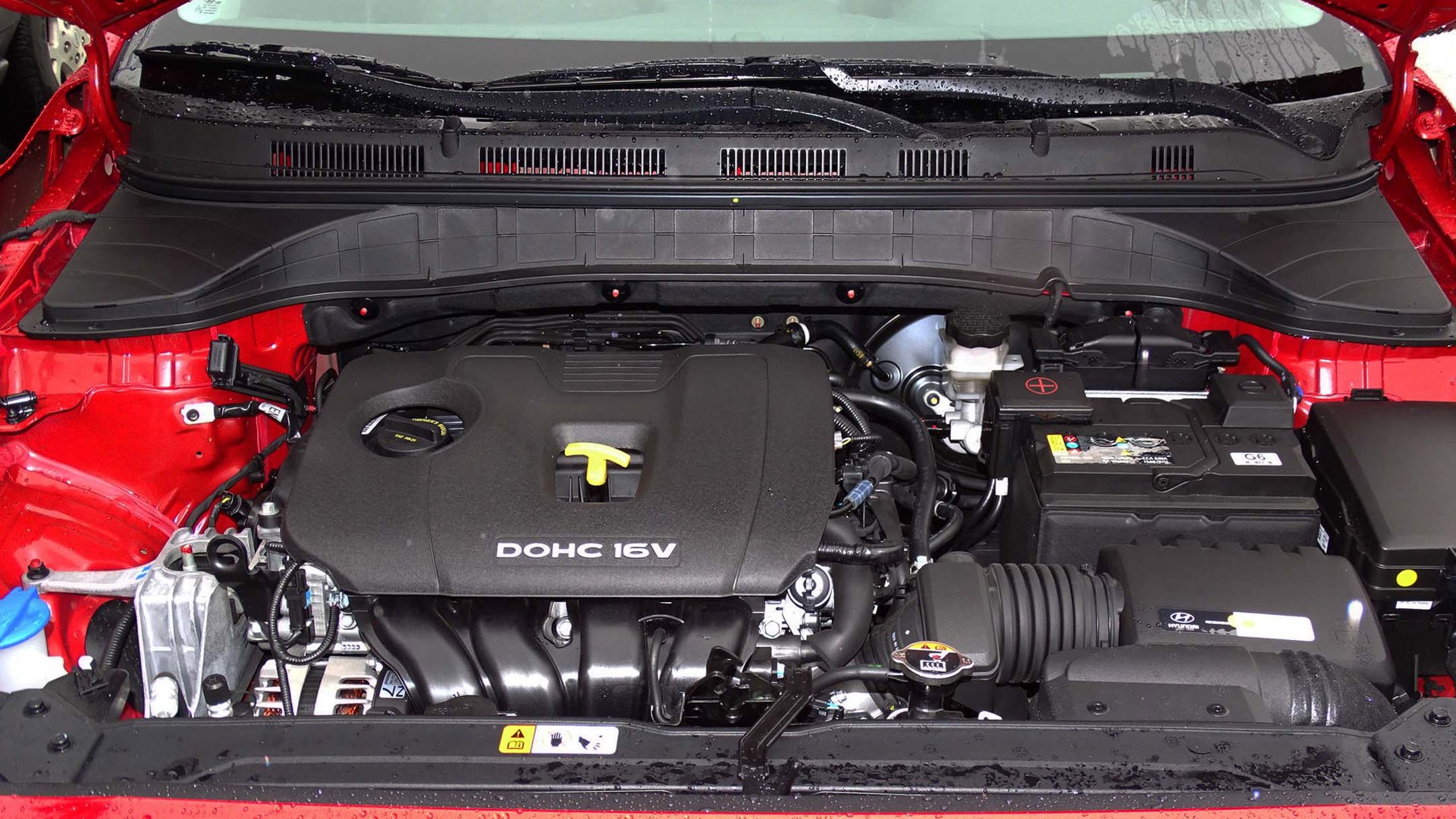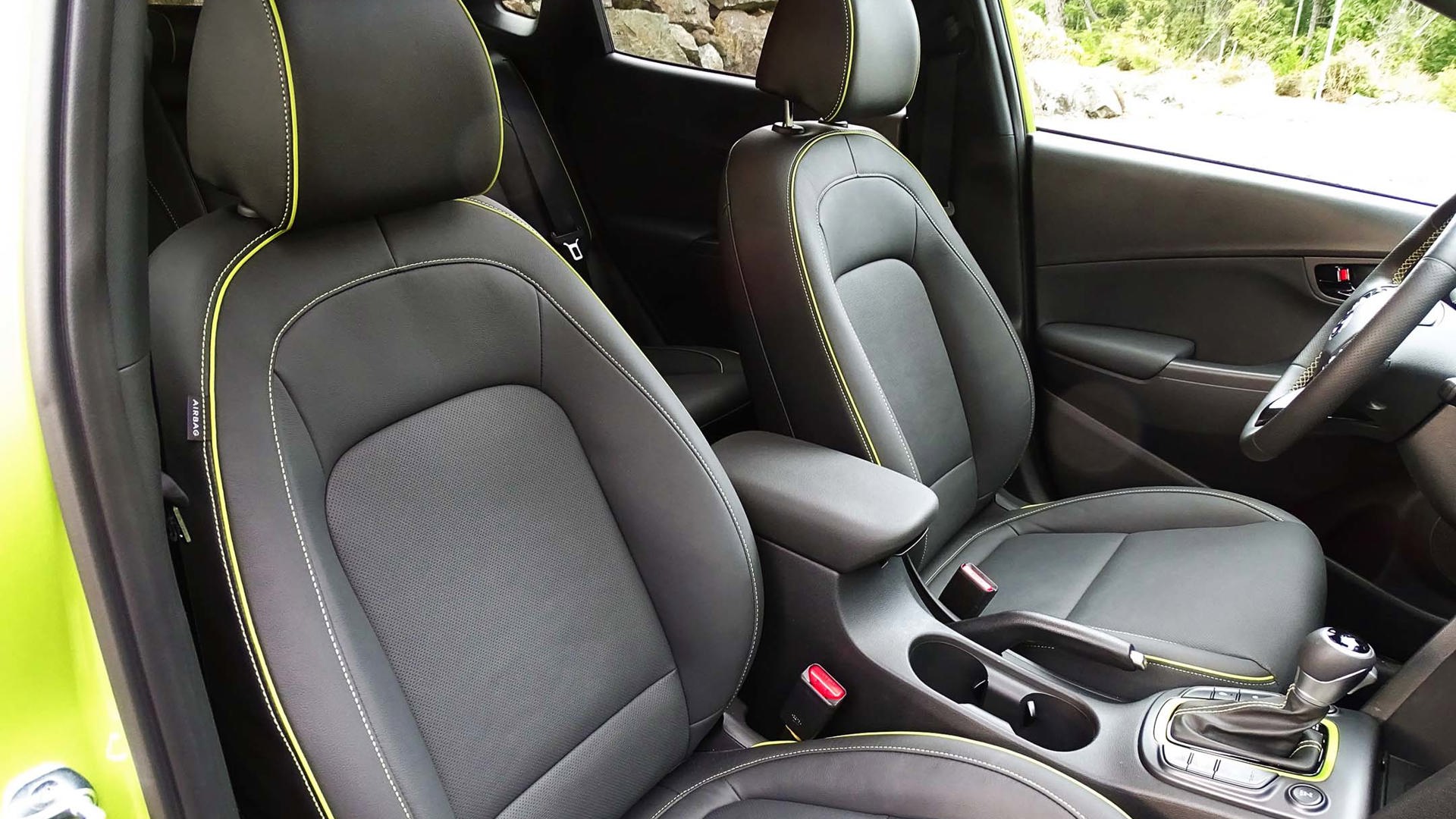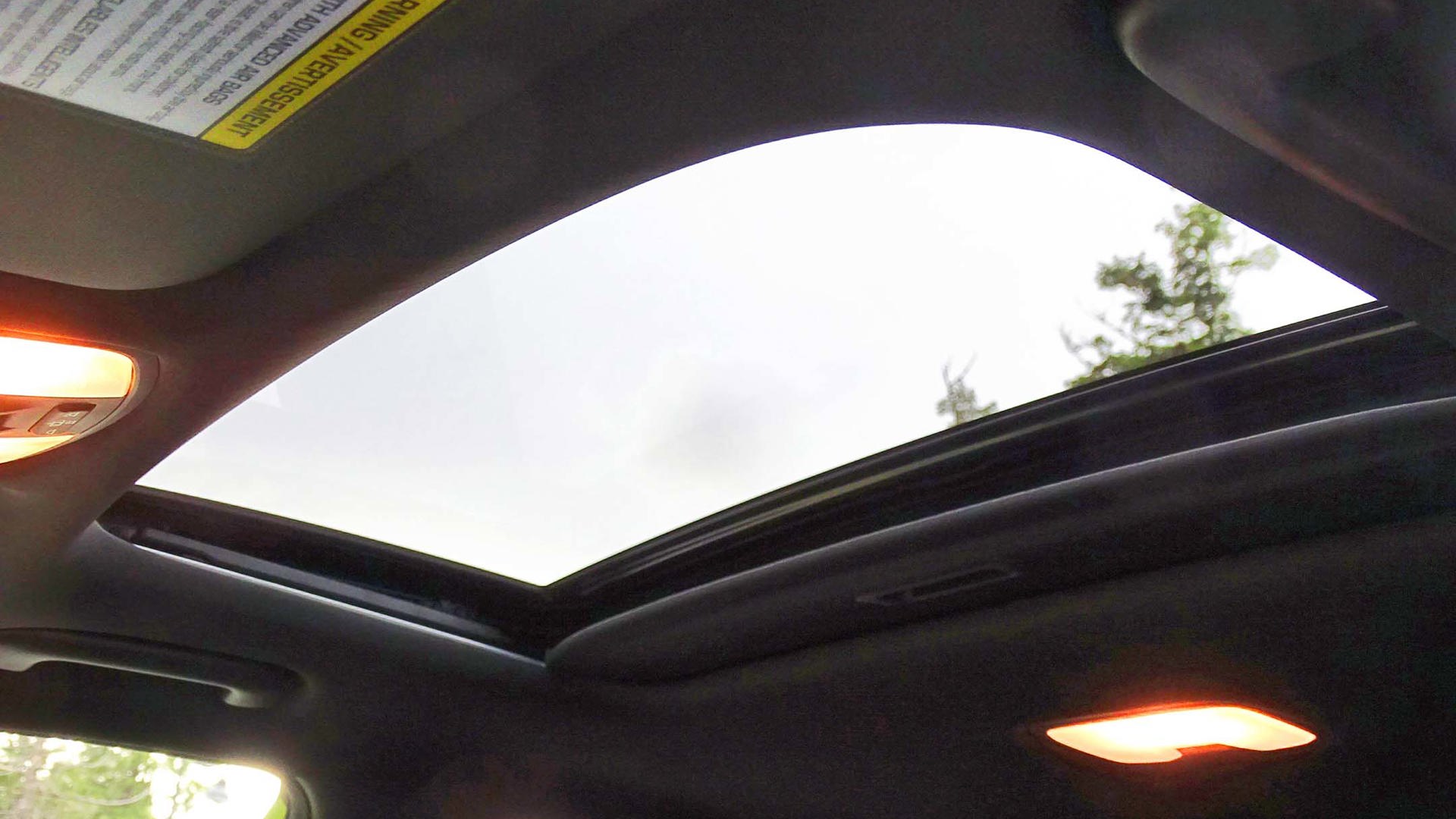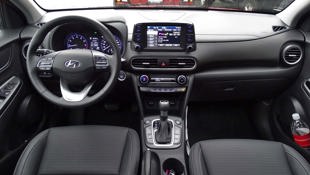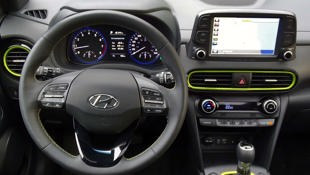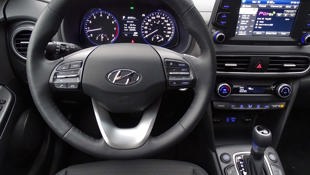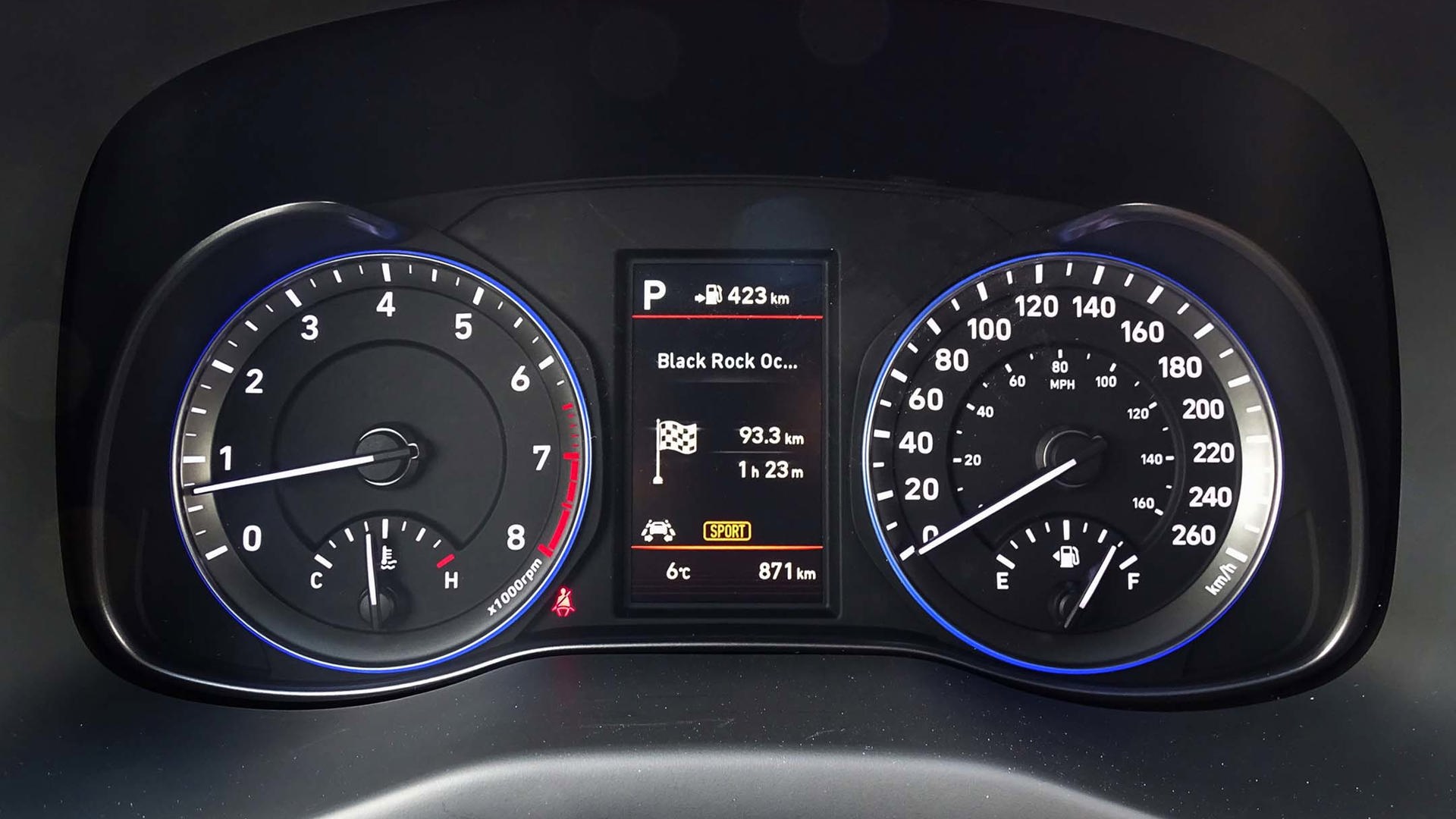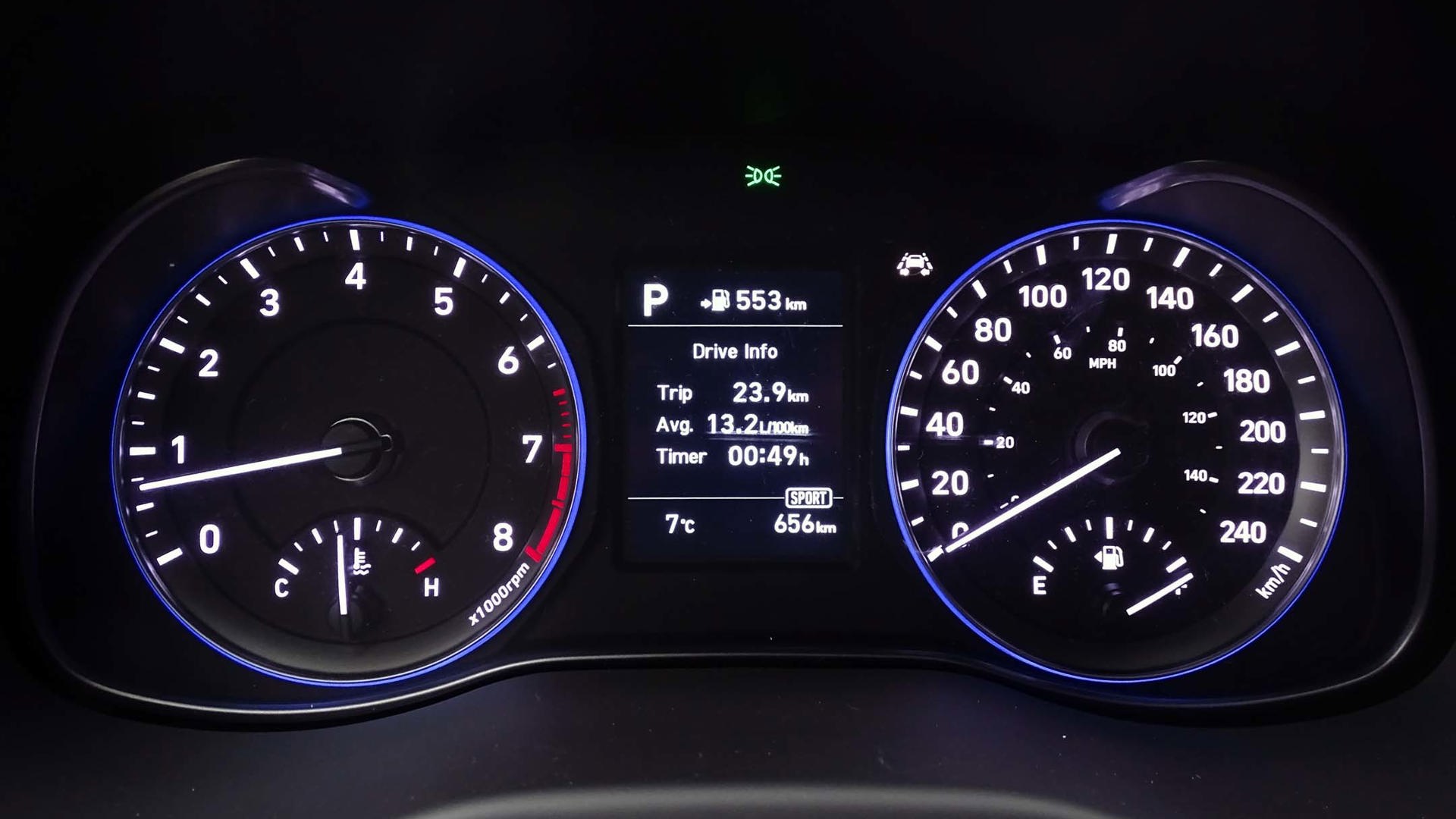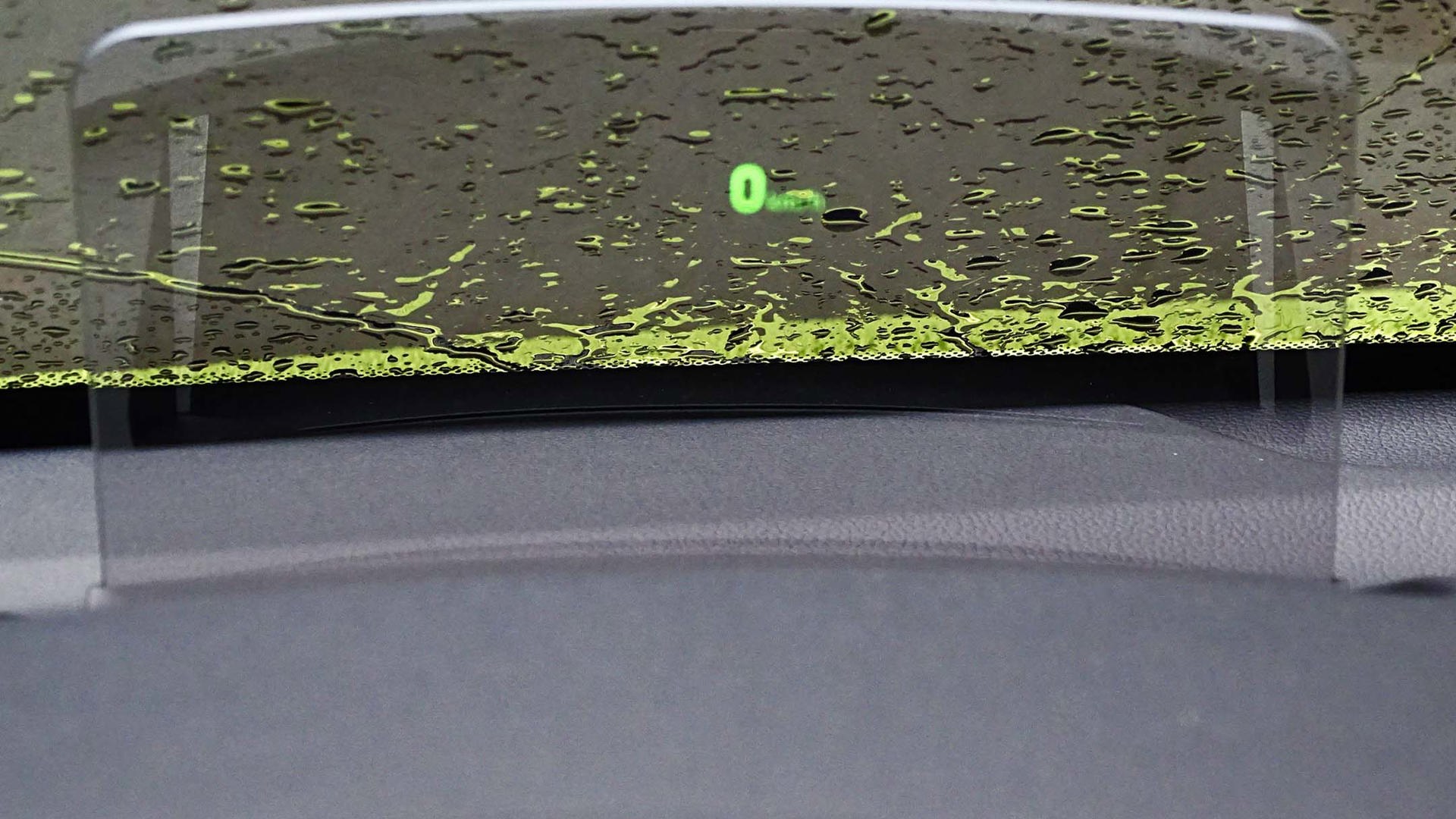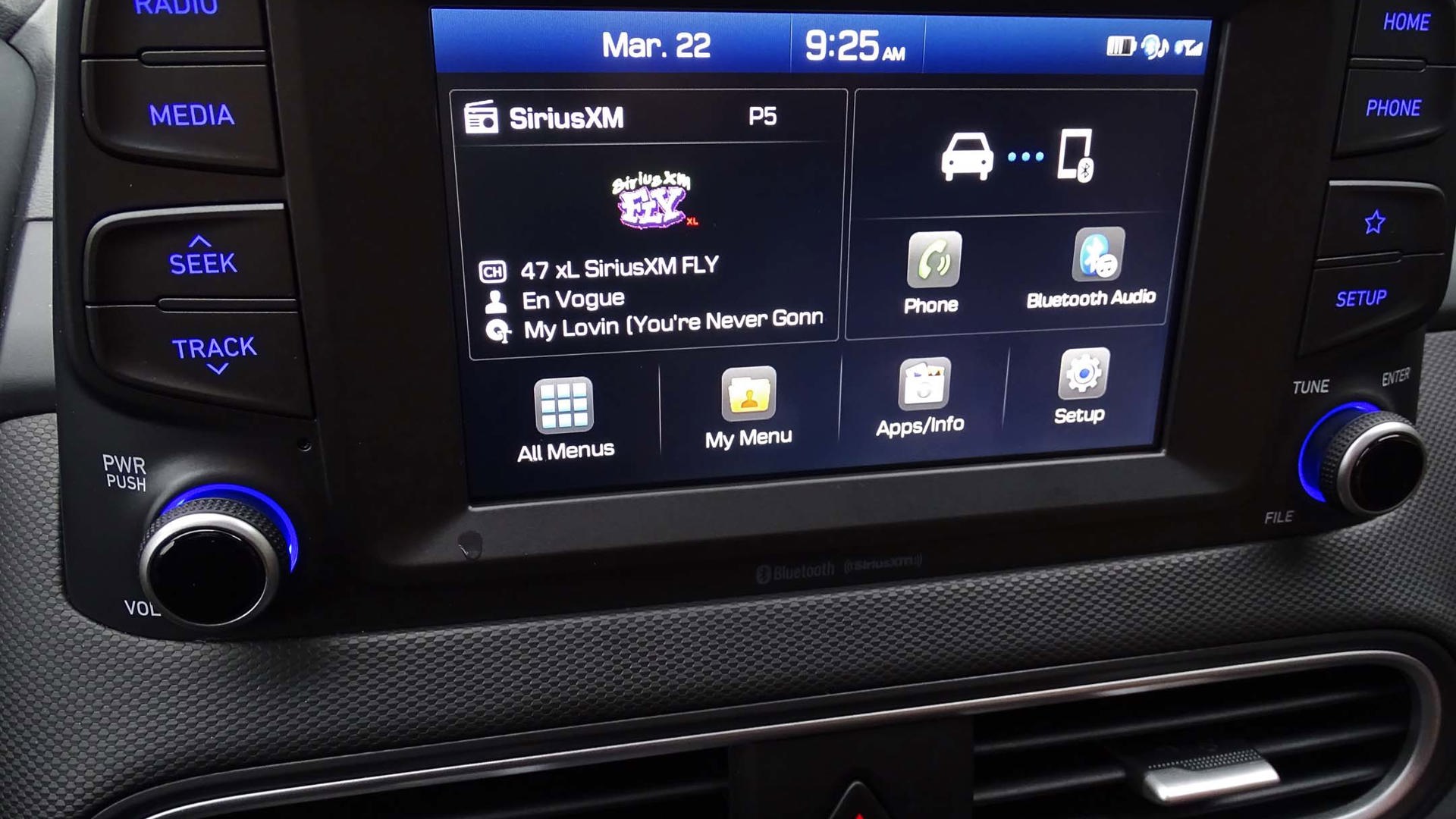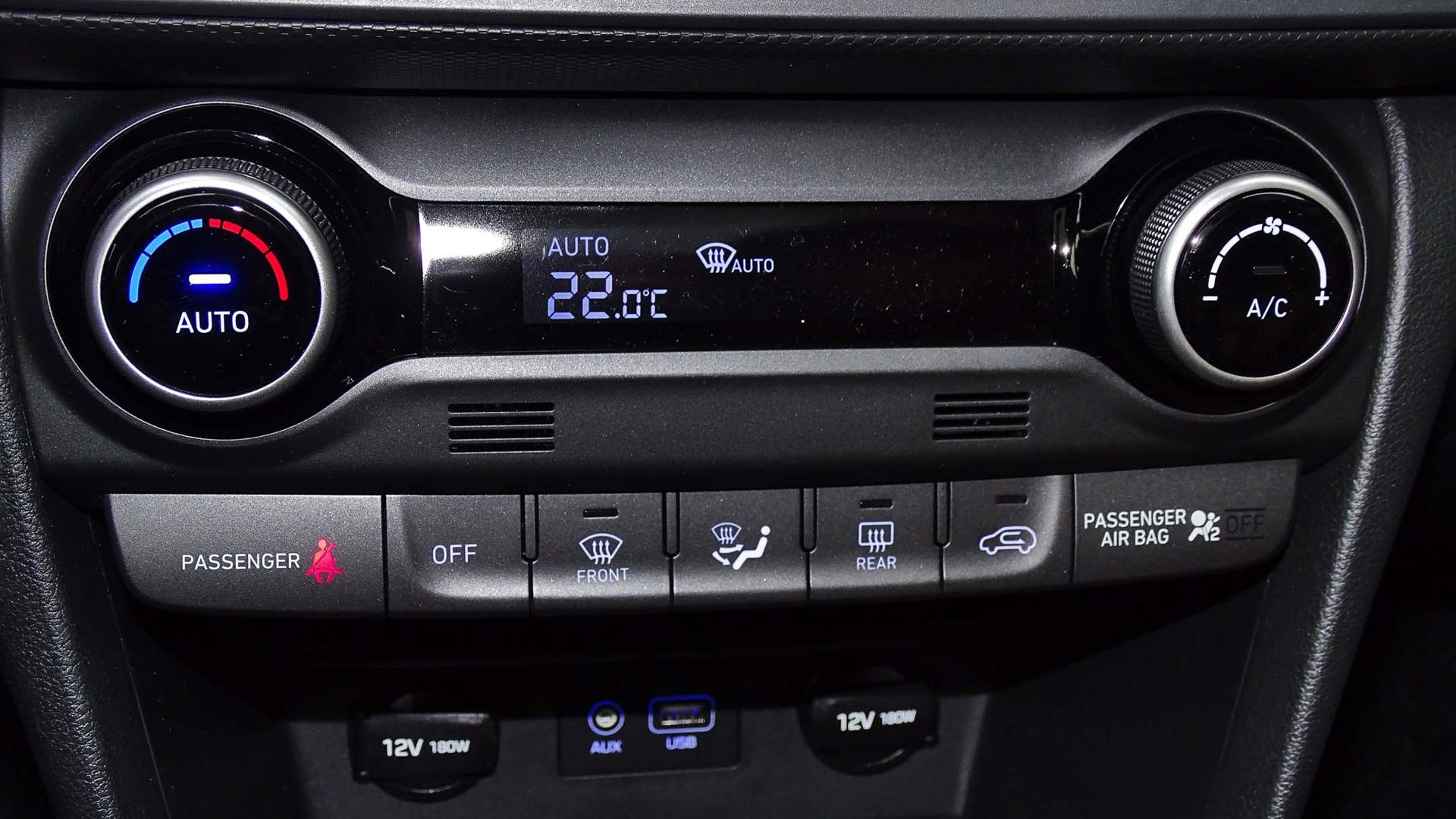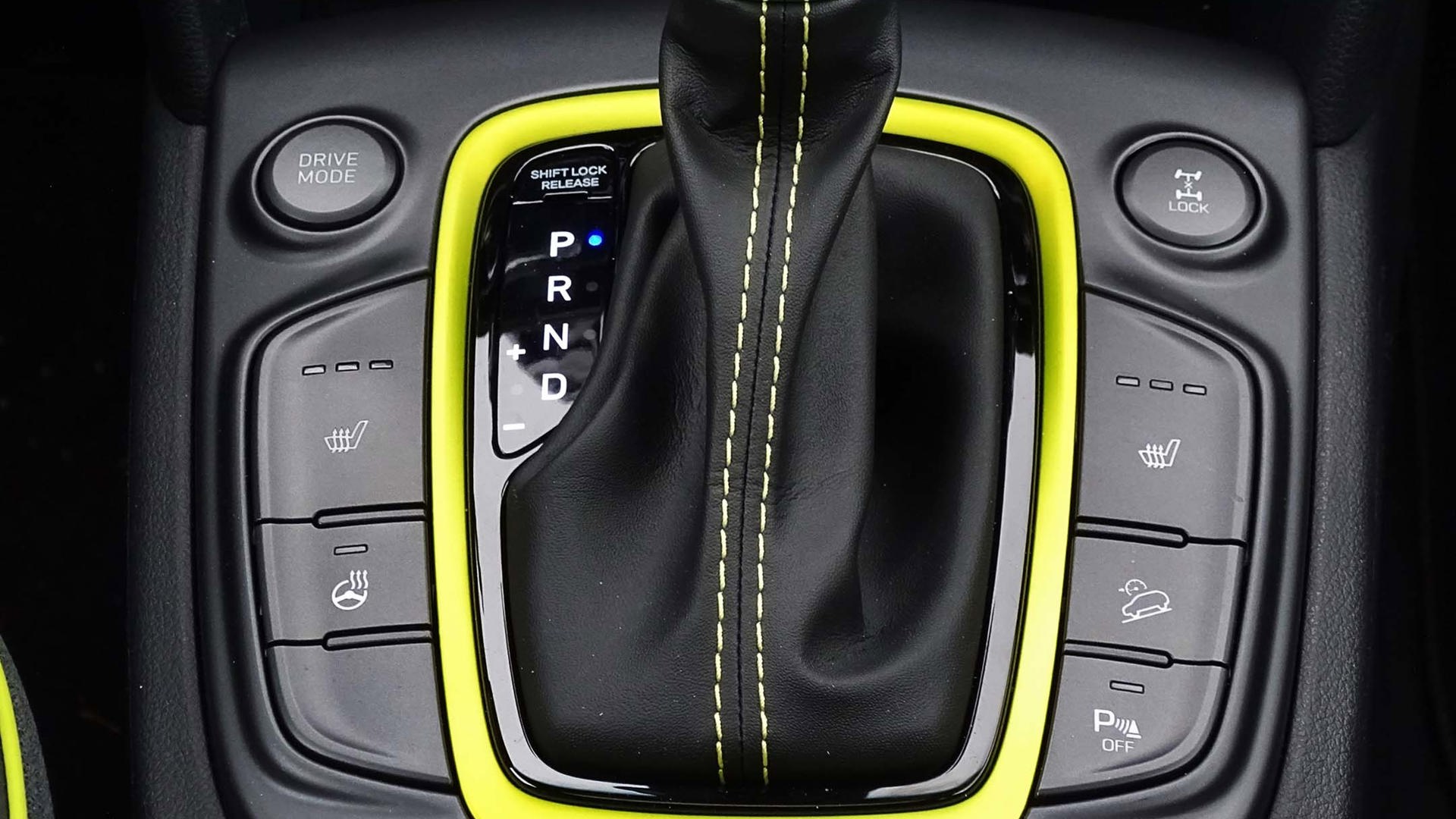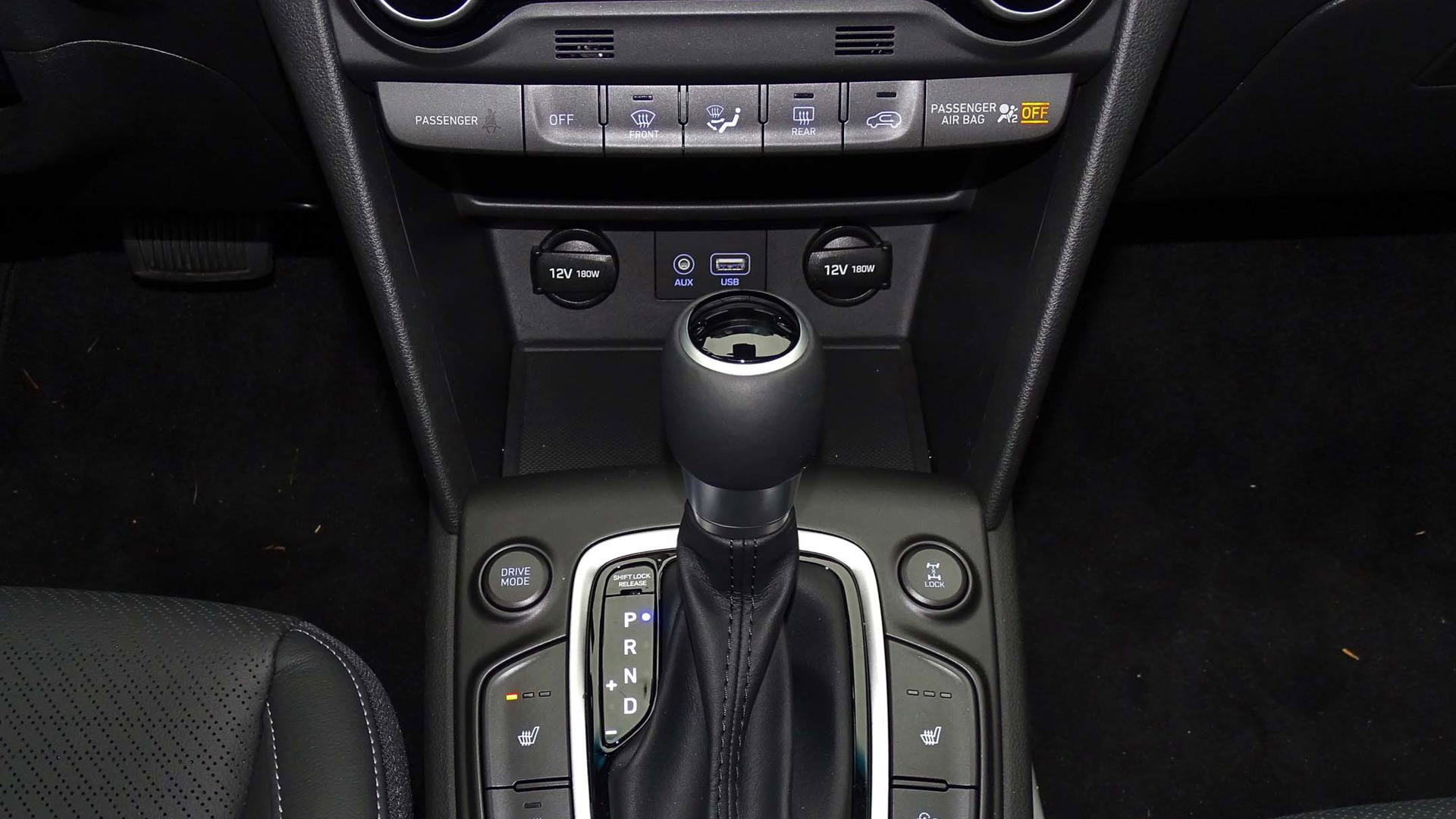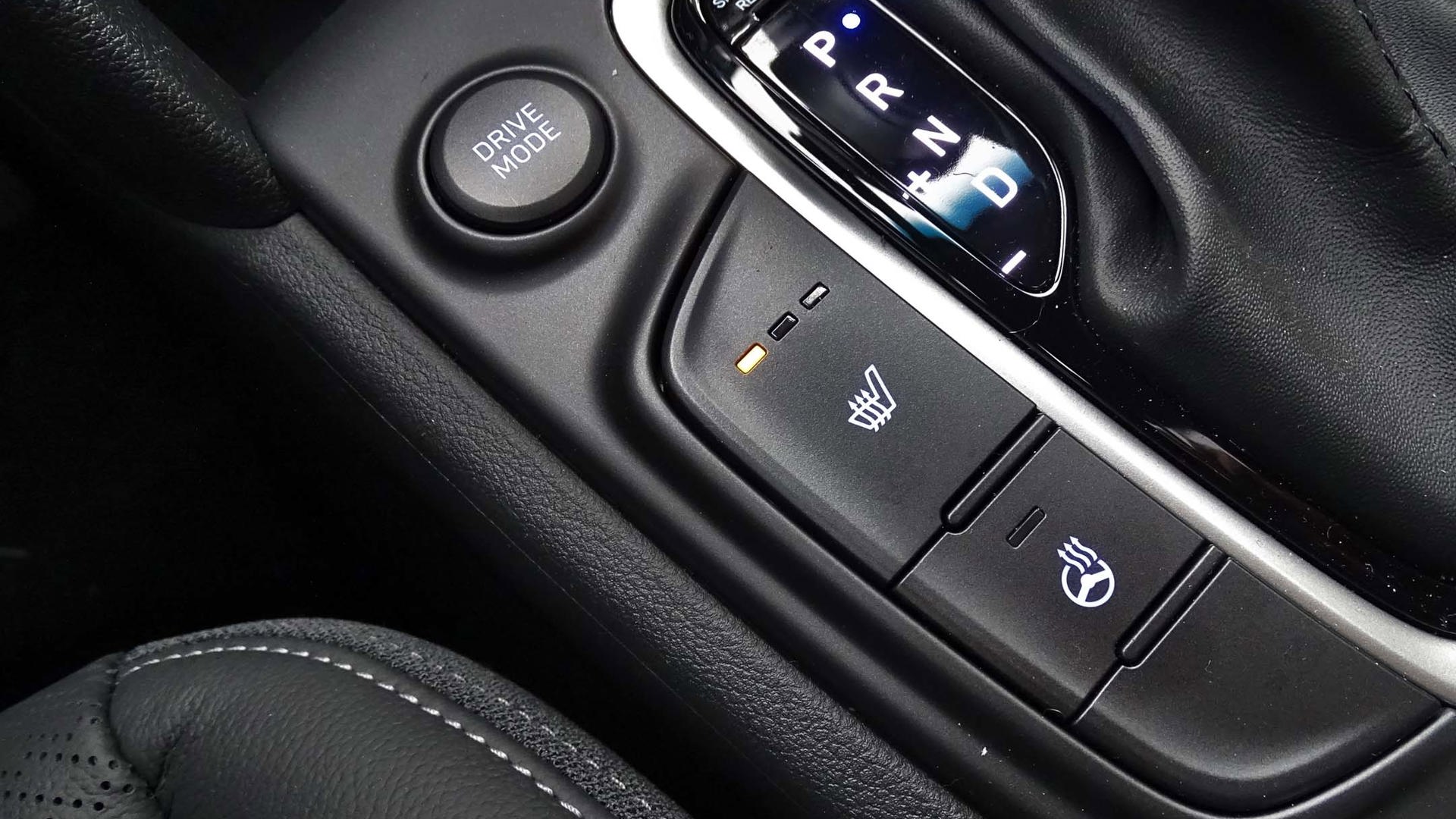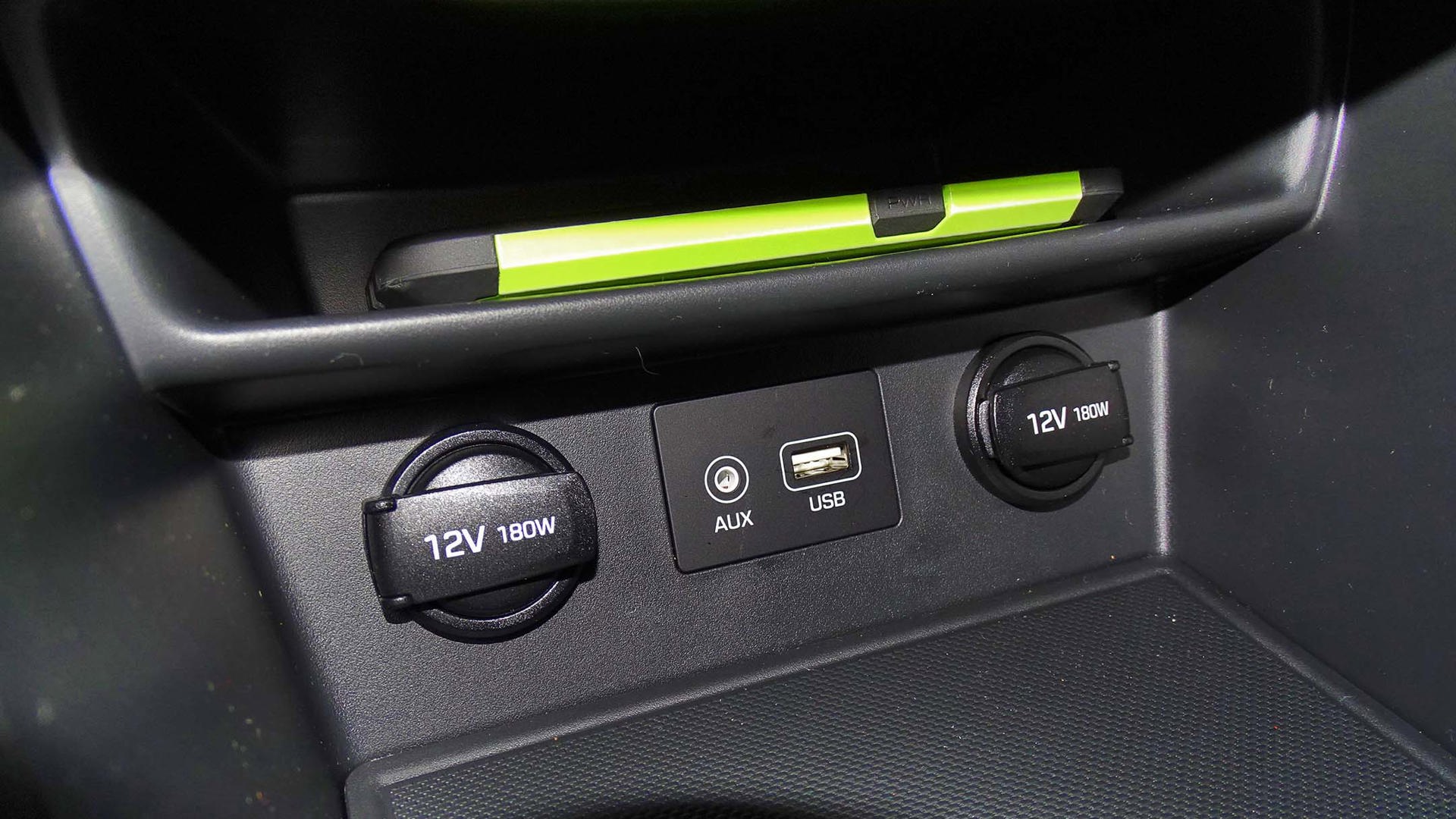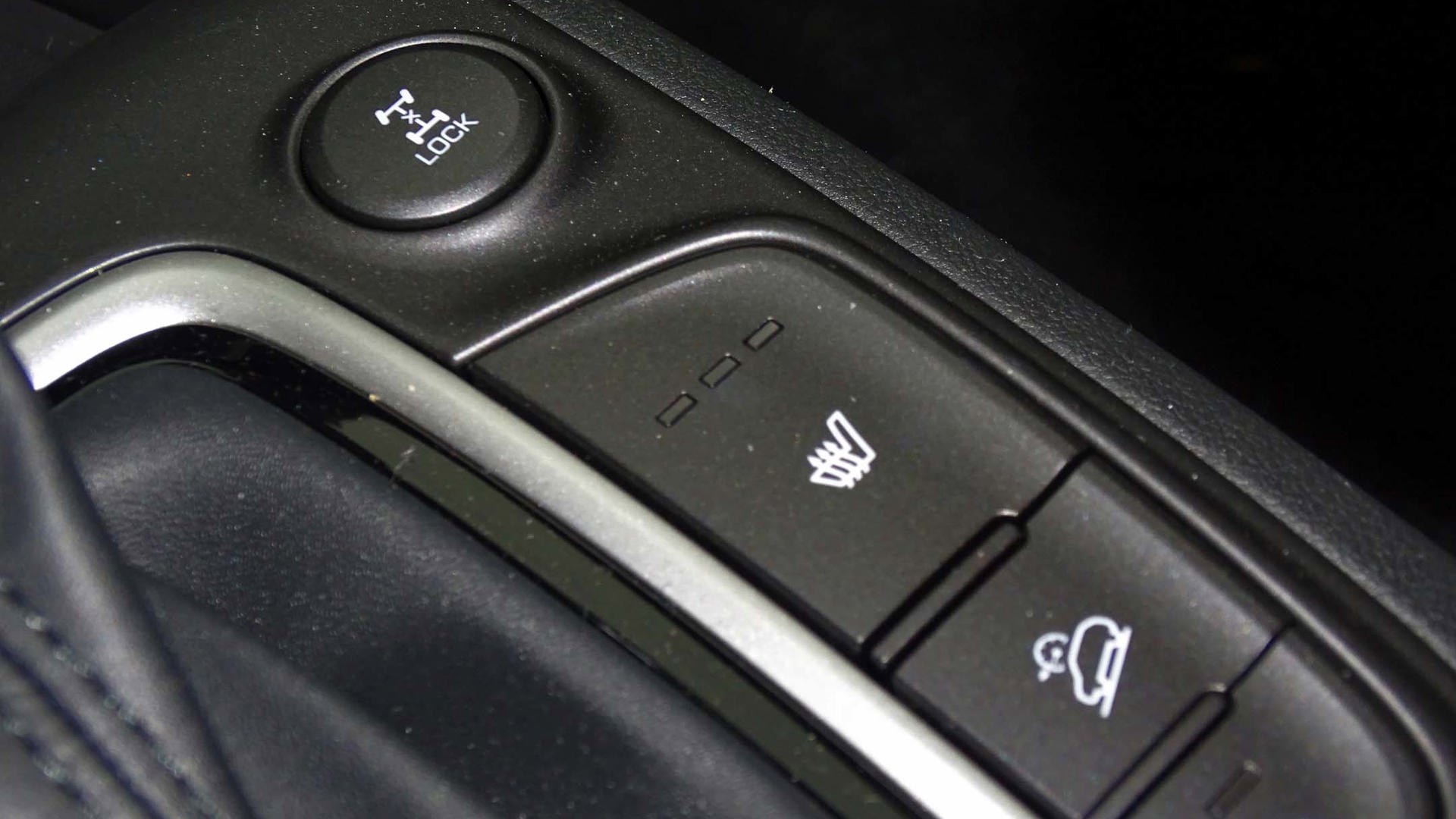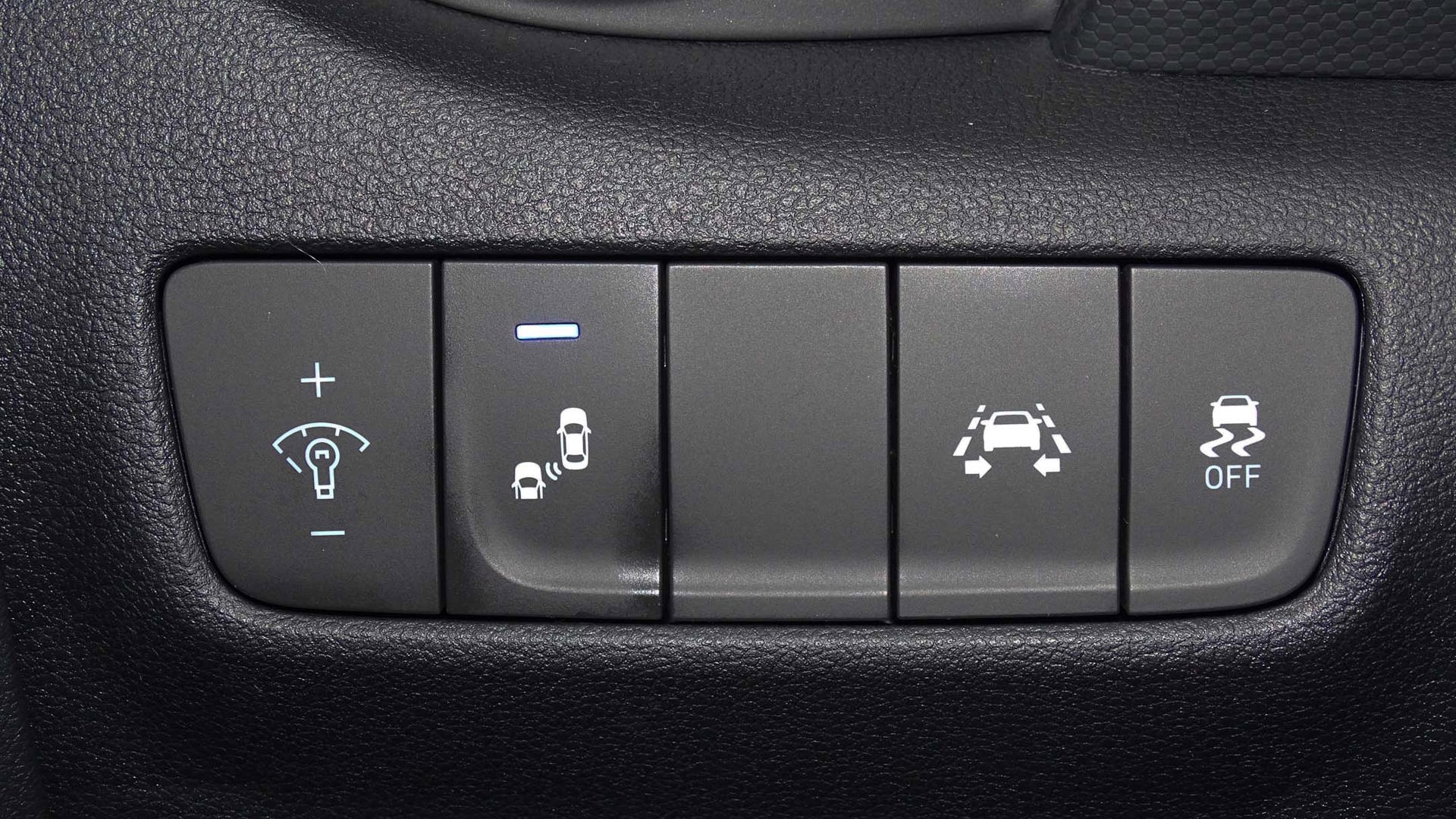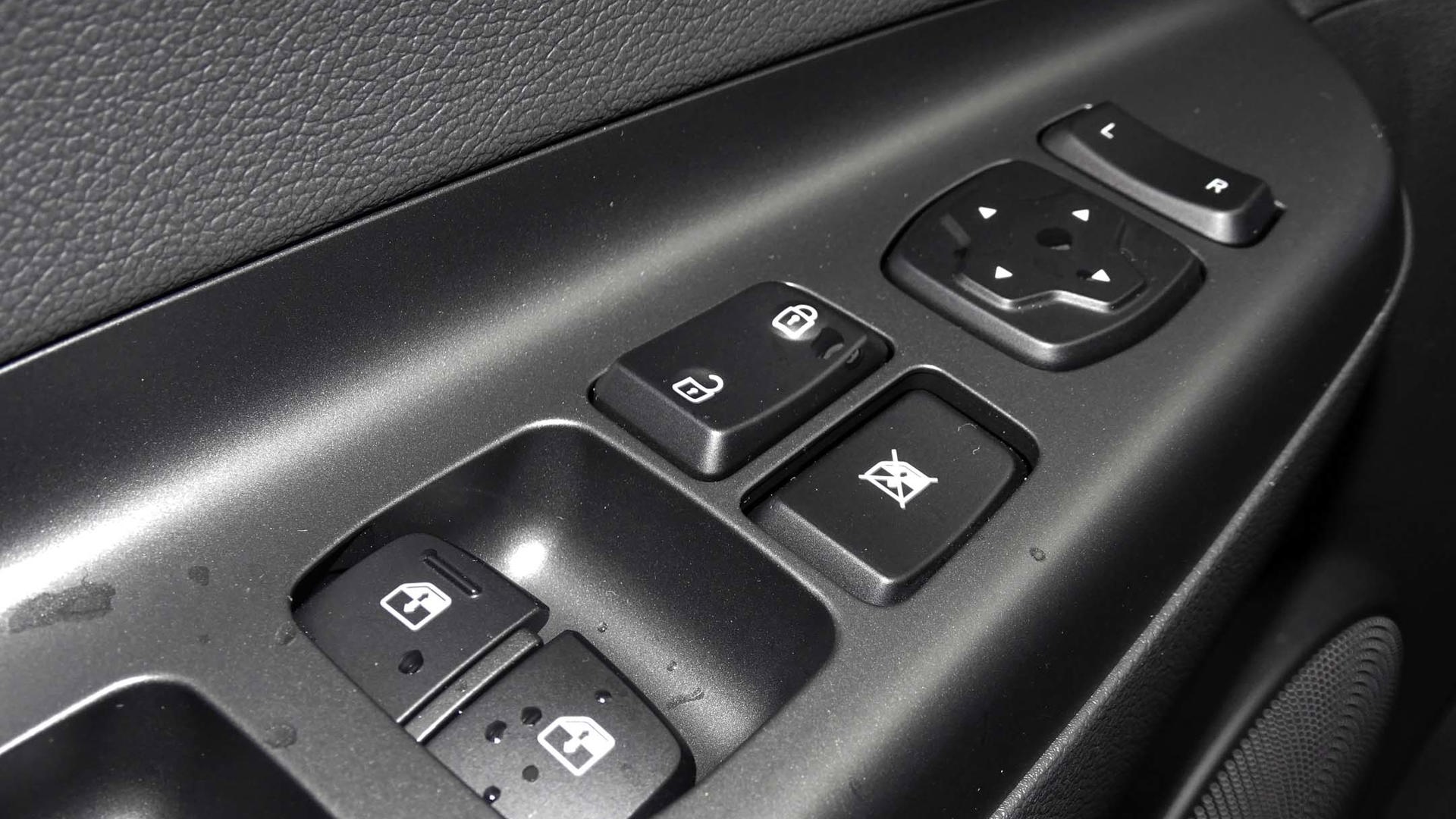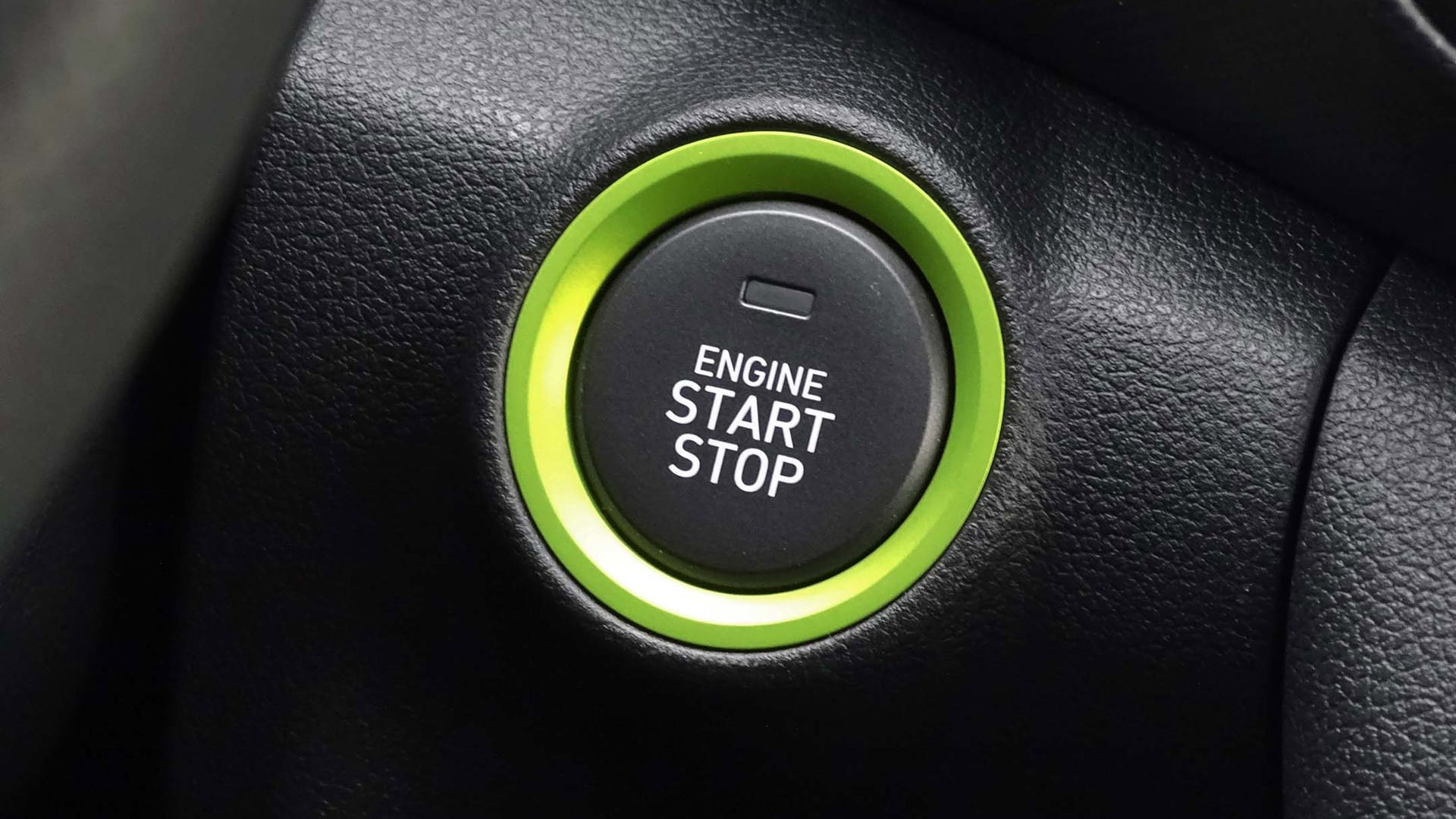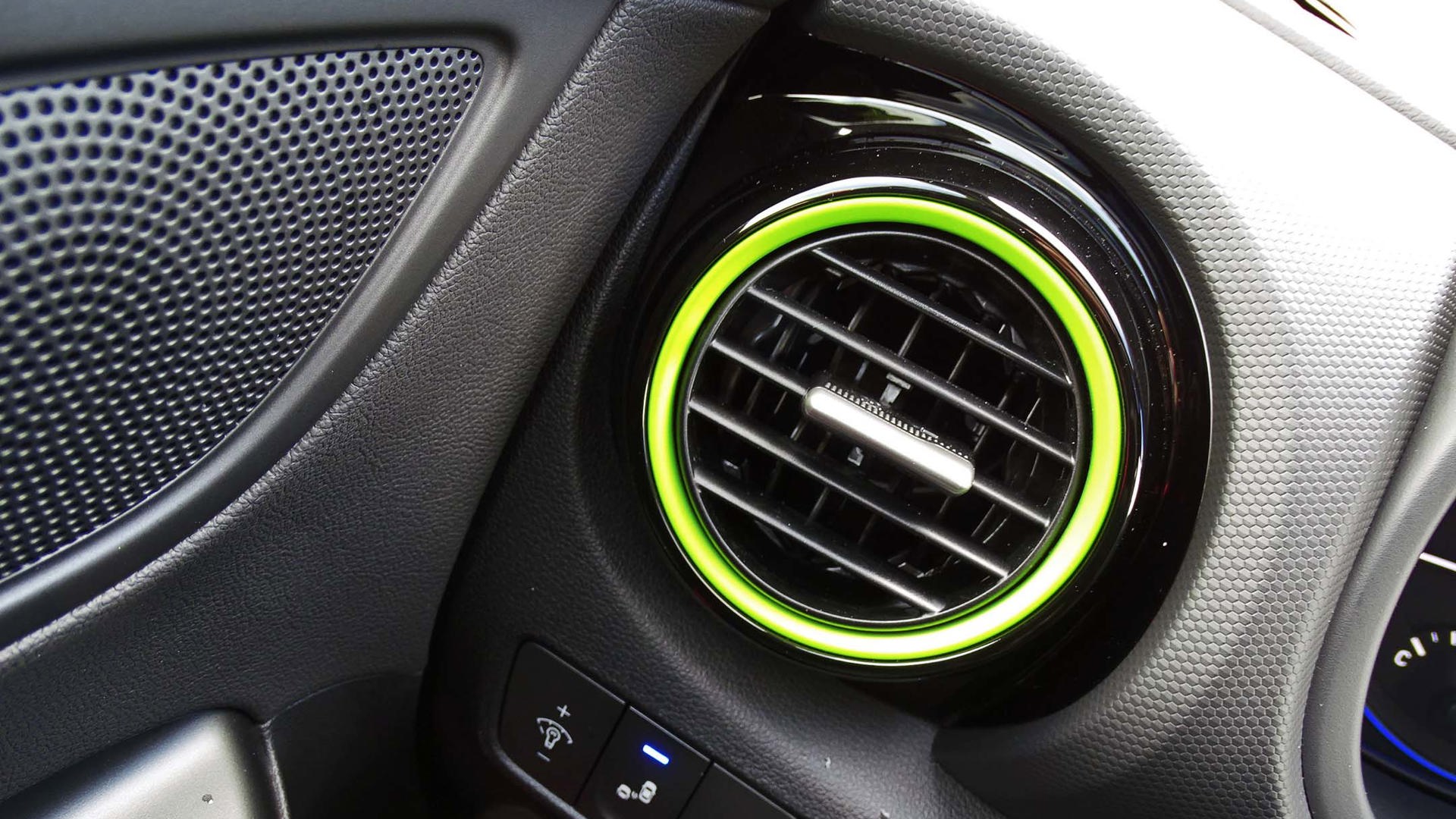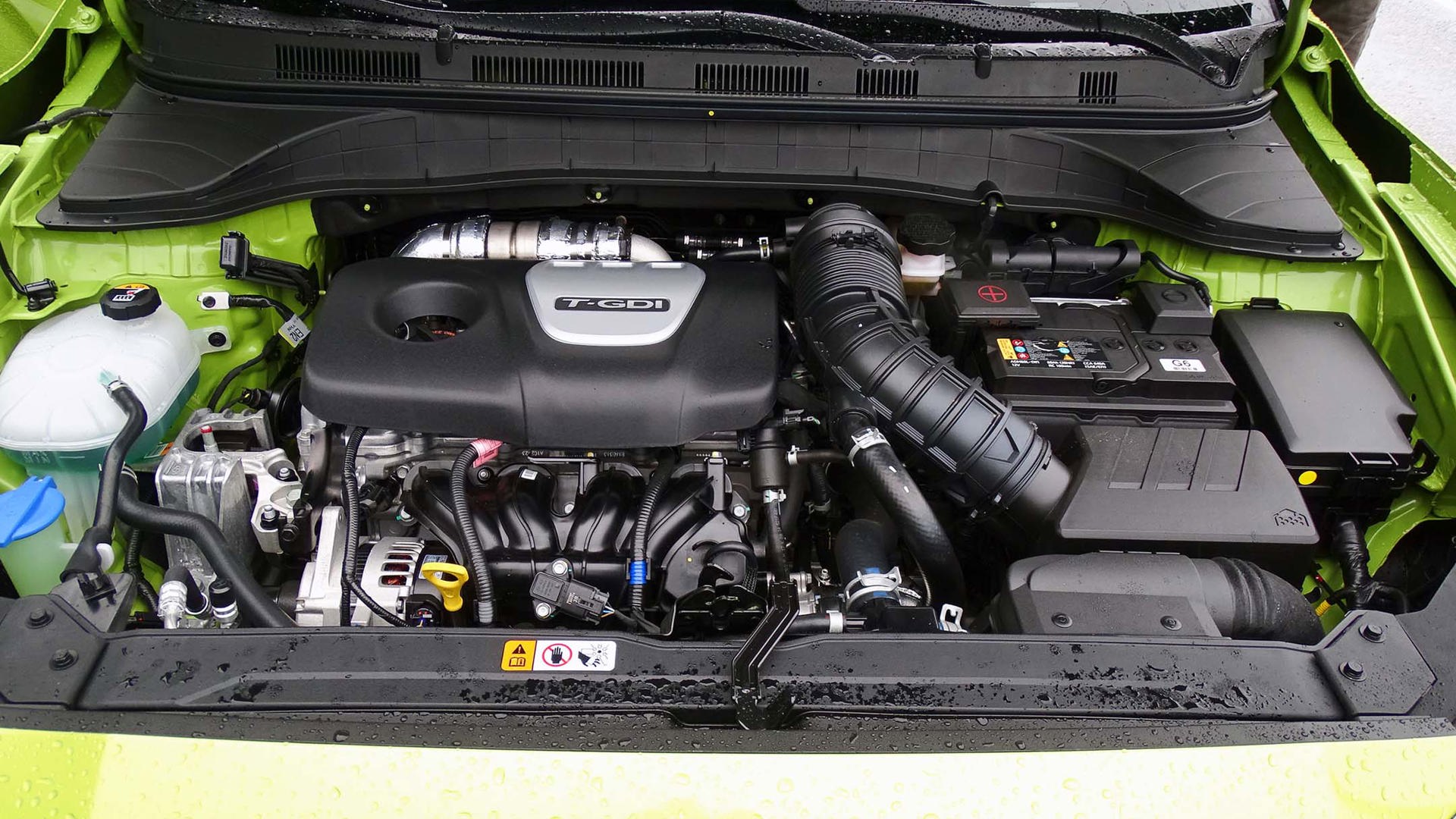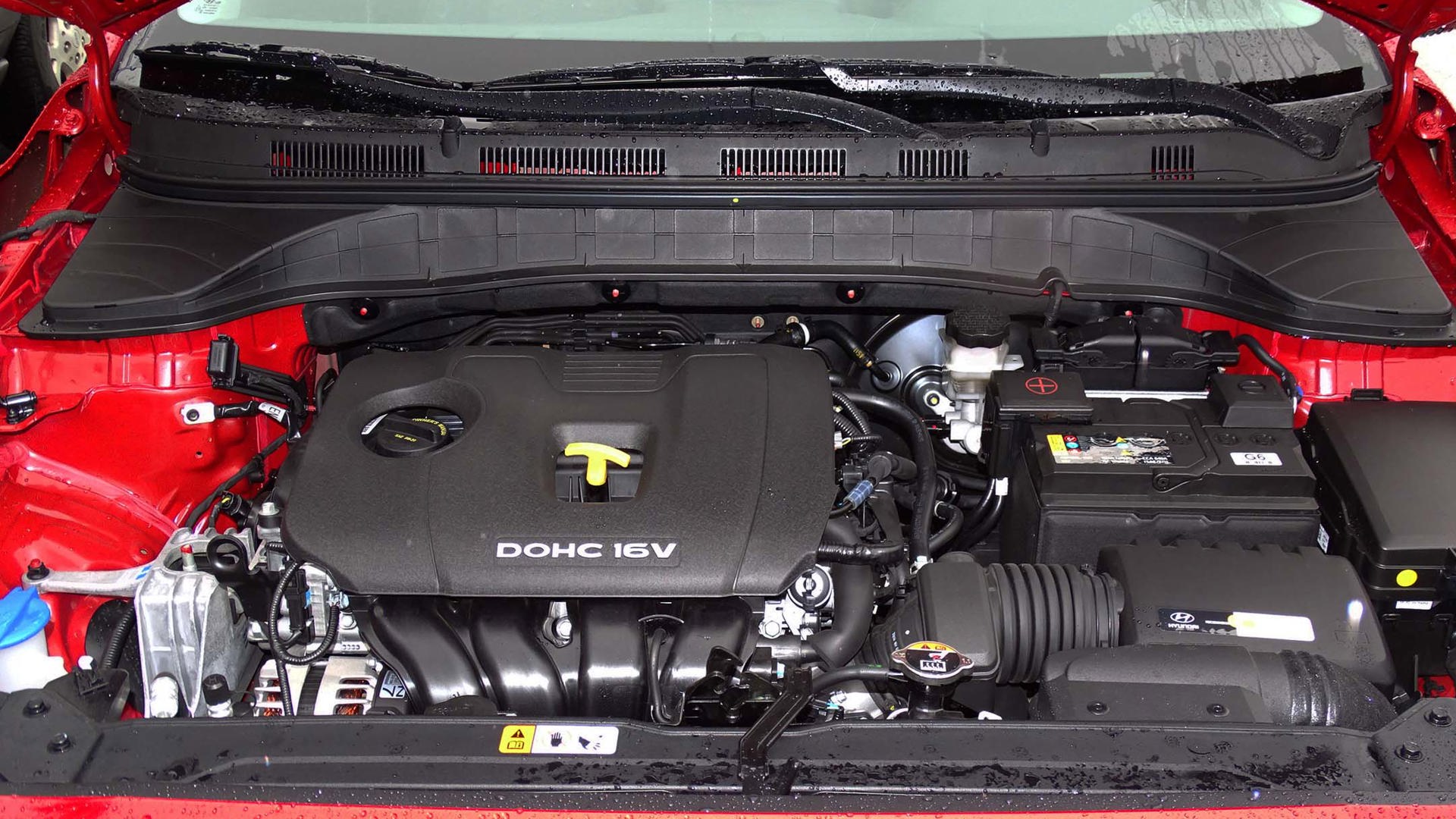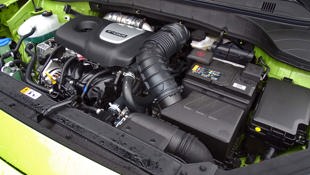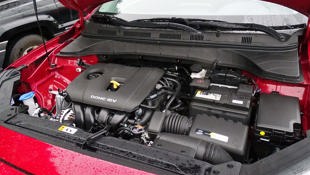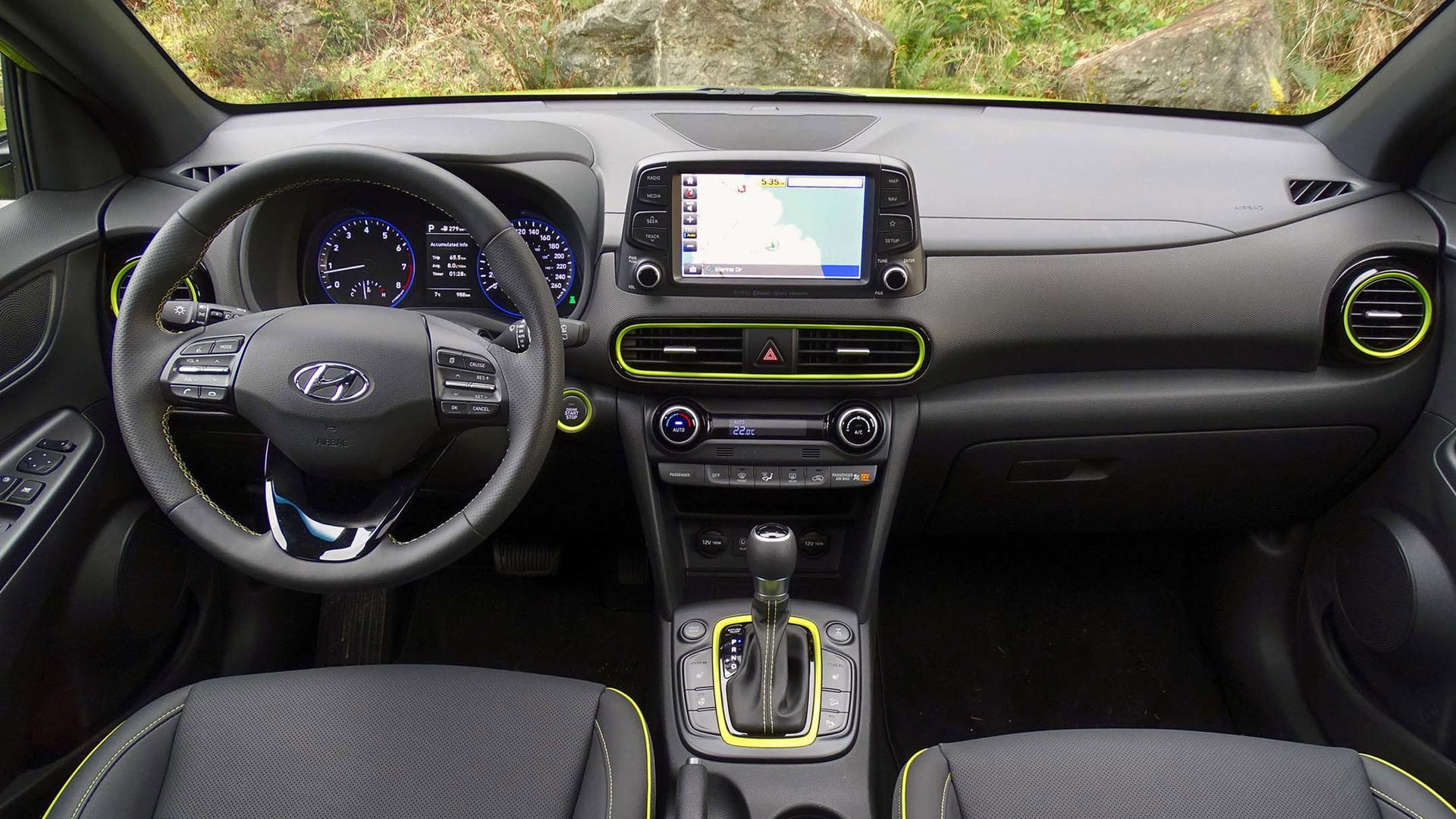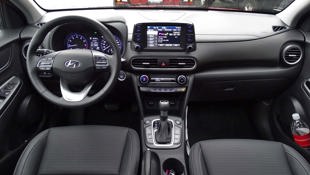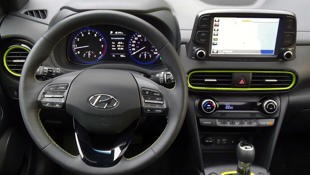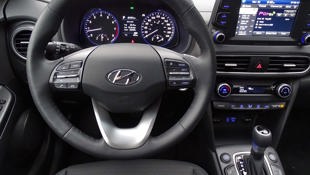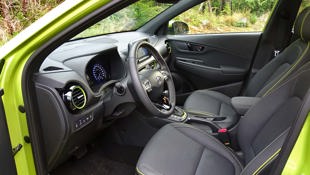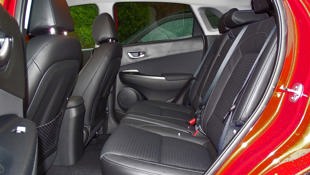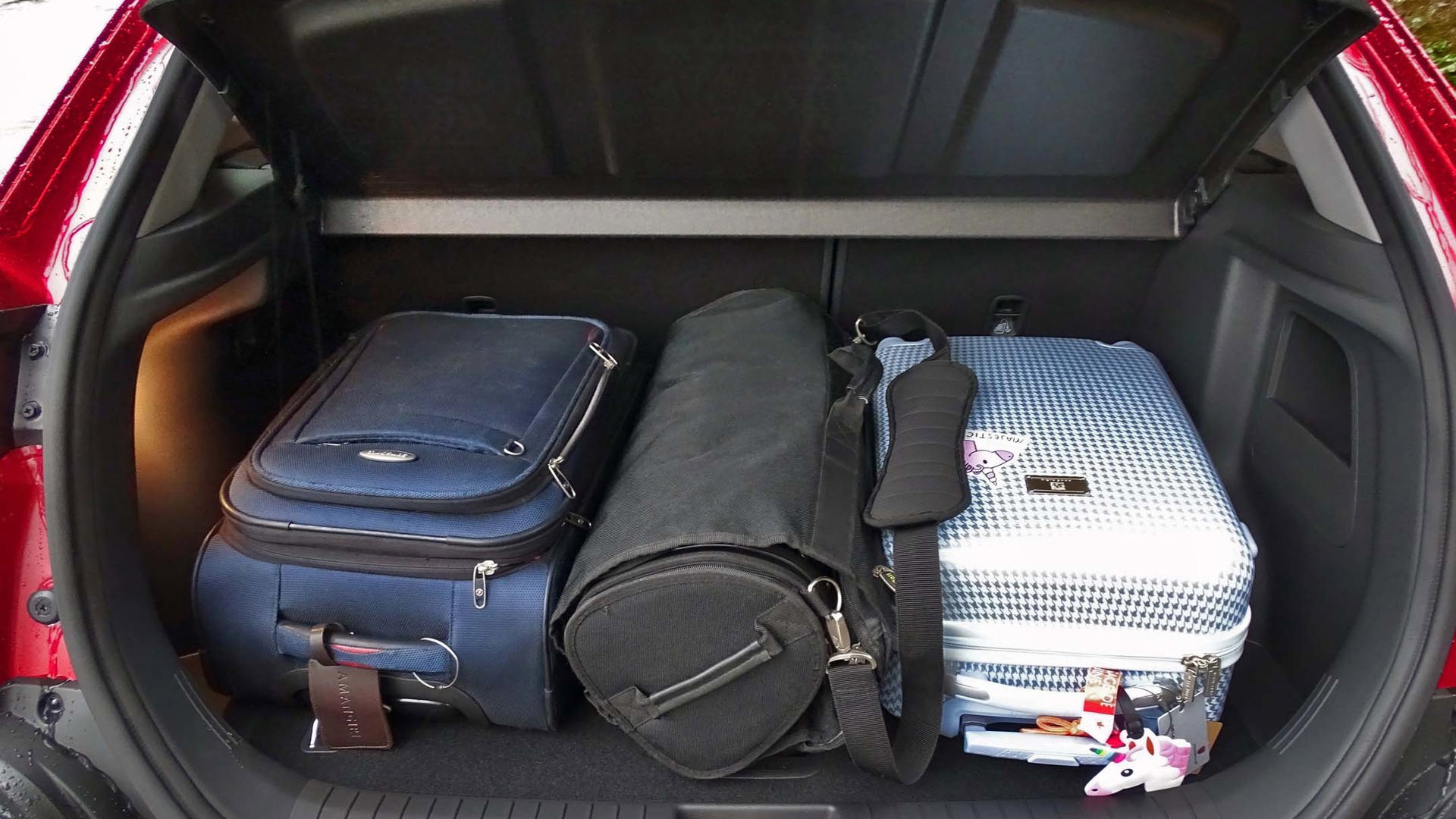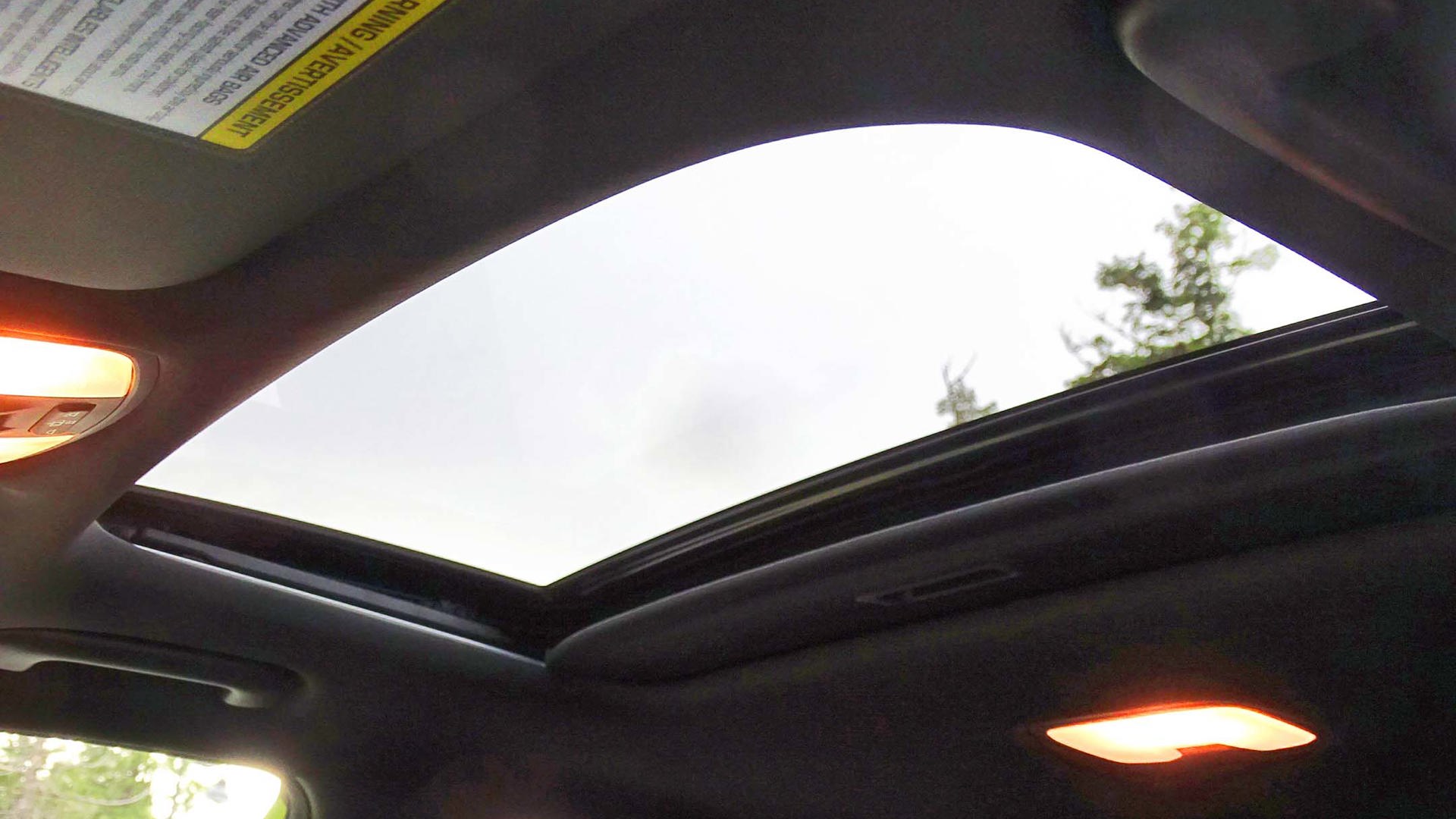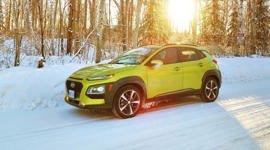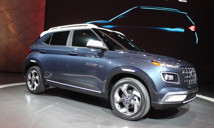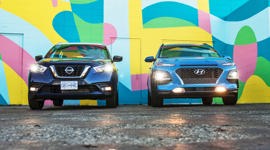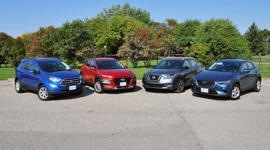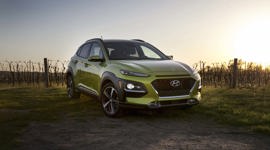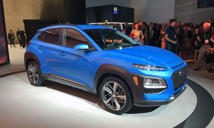First, they came for our large sedans and wagons. And we were silent. Then, they came for our mid-size sedans and family cars. And we said nothing. Now, they’re even coming for our subcompacts.
Well executed, well put together, and hits all the marks for driving smoothness.
Wherever there’s a car, there’s an OEM (or several) making pretty much the same car, but higher, and shaped like an SUV.
And we are eating them up. While sedan sales shrivel, SUV sales surge.
The Mazda2 is dead, killed by the CX-3; the Hyundai Accent has its own new challenger – the 2018 Hyundai Kona.
Yes, those two start at wildly different price points: $13,999 for the Accent, $20,999 for the Kona, but Canada has seen a jump in transaction prices. The CX-3 and Mazda2 were similarly disparate in pricing. Hyundai fully expects some Kona customers to be ex-Accent owners.
Hyundai also expects Kona customers to be a more performance-oriented customer than the competition.
Power and Performance
The reason? An excellent 1.6L turbocharged engine good for 175 hp and 195 lb-ft of torque. That engine drives all four wheels via a seven-speed dual-clutch transmission (DCT). If you don’t count the Mini Countryman, which is arguably in a higher price bracket, that means class-leading power. If you do count the Mini (with 201 hp), then that’s still just second.
There is also a 2.0L naturally aspirated four, which is available in front-wheel or all-wheel drive guises, both times with a six-speed conventional automatic. That unit is good for 147 hp and 132 lb-ft of torque.
You might expect the lesser output to translate to better fuel economy – but it doesn’t.
When equipped with AWD those two engines have the exact same combined fuel rating of 8.6 L/100 km. Full ratings are: 8.6/7.0/7.9 L/100 km city/highway/combined for the 2.0L FWD models, 9.2/7.8/8.6 for 2.0L AWD trims and 9.0/8.0/8.6 for the 1.6L turbo. The turbo is even better than the 2.0L in the city, where most Kona owners will drive, most of the time.
So why buy the 2.0? Economy (the monetary kind), because you really like FWD, or because you hate the DCT. If you’re going towards the top trim anyway, prefer AWD, and don’t mind or even enjoy DCTs – there is only one real option for you.
Sure, the 2.0L is a stout little lump, hustling the 1,478 kg Luxury AWD trim we were in to highway speeds in good time, but it doesn’t do it gracefully. For the record, the weight of the Kona see-saws like my own does at Christmas time.
Front-wheel-drive base trims are 1,311 kg, with the range-topping Ultimate AWD a full 206 kg heavier at 1,517.
Ultimately, the 1.6T is a far better powerplant and drivetrain. It’s not only faster, but it’s noticeably less harsh, quieter, smoother, and it produces equivalent fuel economy to the 2.0L. My one criticism is of the DCT. As is typical of these transmissions, the Kona’s seven-speed is a tad hesitant and awkward at low speed. Specifically, the sort of low-speed maneuvering you do in a tight condo parking spot. It’s better when the ground is flat, and more pronounced when there’s a gradient to get around.
That’s the trade-off. The DCT performs flawlessly out on the road, and lights up when hustled, but I often wonder if the DCT is selected more to please us enthusiasts and may actually be the poorer choice for this segment. I’m not saying I don’t love it (I do), but a brief read of any Ford Focus forum will show you that many a commuter-car consumer find DCTs onerous.
Handling and Ride Comfort
Handling, steering feel, brake feel, and braking power are very good. The brakes are surprising; the Kona stops very well with a firm, confident pedal.
The electric assist is well calibrated and weighted, and has the smallest, narrowest of dead-spots in the middle I’ve experienced in a Hyundai SUV to date. There are three drive modes, Eco, Normal, and Sport – which used to come with pronounced steering weight differences. They don’t any more. Actually, the drive modes did very little in general. Eco dulls the throttle a tad, but you won’t feel much between Normal and Sport.
Road manners in the Kona are superb.
You know a car has good bump absorption when you’re building speed for the speed bumps, trying to coax the “crash” out of the suspension. It never came. I wasn’t able to drive the FWD version, which has a cheaper torsion beam setup in the rear, but the multi-link rear of the AWD models gives the road a thorough – and surprising – smoothing out.
One colleague we stuck in the back (for science) noted that there was a lot less sound insulation in that row than the front. We didn’t care. The front was lovely. Wind noise and road noise is well inside acceptable limits, and the seats are decently comfortable.
Interior and Technology
Where the Kona really shines over the competition is in space. It feels much bigger than it is on paper, and I was impressed by how good both rows felt. The ergonomics are spot on, everything is easy to reach, and Hyundai’s infotainment system is spectacular.
I adore the “record” function that records up to 10 SiriusXM stations from the moment the car starts. Ever switched over just as “Beat It” is finishing? It’s a horrible feeling. Not so here: hit “rewind” and you’re showing how funky, and strong your fight is in an instant. Android Auto and Apple CarPlay are available on all trims, and the split-screen setup is good.
The instrument cluster is easy to read, and the eight-inch, pop-up head-up display available on Ultimate and Luxury models is cool, if gimmicky. I enjoyed that I could change the speedo colour from white to either orange or green, and see my navi commands when needed. I am a closet tech geek though.
Visibility was another surprise. Fully expecting a pill-box slit for a rear window, I found the ability to see out of the Kona more than decent.
The materials are not as good as you’ll find in some competitors – especially the CX-3, but the overall look and feel is very good. Especially when you fork out the $200 for the optional “lime trim package” – effectively the only option available on the Kona. It adds green piping to the leather seats, and green trim throughout the interior.
At 544 L (and 1,296 with the seats folded) the Kona has an average cargo capacity for the segment. It does have a hidden storage section under the false floor and comes with a luggage net as well in higher trims. The cargo cover is standard. We put two large carry-ons, and my large suit-roll in the cargo area with ease, so it is deep enough to be useful.
A high-strength steel arc around the tailgate improves rigidity, panel flex, and most importantly – safety. Hyundai is proud of its SuperStructure technology and tells us they’ve added even more energy-distribution channels to the floor of this platform to improve its resilience in a crash.
For some reason they didn’t want me to test any of that in real life, so I can’t tell you how true any of that is, but I do know the Kona feels substantial and strong. It doesn’t feel like a subcompact.
Trims and Packages
There are five trims: The $20,999 Essential Package and $22,749 Preferred are both available with the 2.0L and six-speed automatic in both FWD and AWD. The $27,499 Luxury is available with the 2.0L too, but is AWD only. The $26,899 Trend and $31,7999 Ultimate are both AWD and come with the 1.6L turbo and the seven-speed DCT.
Base-level Essential Konas get a back-up camera, heated front seats, 7.0-inch touchscreen, LED running lights, remote keyless entry, automatic headlights, and Android Auto/Apple CarPlay.
The Preferred trim adds 17-inch wheels, blind-spot detection, heated leather steering wheel, smart key, push-button start, back-up assist radar, fog lights, and heated side mirrors.
All-wheel drive is a $2,000 add-on for both those trims.
At the pinnacle of the 2.0L models is the Luxury trim. It adds three drive modes (Normal, Eco, and Sport), power sunroof, leather seats, automatic climate control, power driver seat, polarized windscreen and side windows, lane-keep assist, forward collision avoidance, autonomous emergency braking, driver’s attention assist, SiriusXM, and a luggage net.
Between the Preferred and Luxury trims on the pricing ladder, the Trend trim is perhaps the best value proposition. It offers the 1.6L engine and seven-speed DCT. On top of the Preferred feature set it gets 18-inch alloys, LED taillights, eight-inch head-up display, and the three drive modes.
The Ultimate trim is likewise paired with the 1.6L engine and gets the full shebang of available features, including: eight-inch central touchscreen, 4.2-inch LCD instrument cluster screen, LED headlights with cornering light and auto high-beam, power sunroof, leather seats, automatic climate control, and Infinity Premium Sound system.
Safety boffins will find lane-keep assist, forward autonomous emergency braking and driver attention assist.
Tech junkies will enjoy the wireless charging pad and the BlueLink app connection. That service is free for five years and includes remote-start, climate-setting, and vehicle diagnostics, all from a phone-based app.
Trend and Ultimate models can be had with a contrasting roof in grey or black for $250.
The only additional options are the aforementioned $200 lime colour pack, which adds green piping to leather chairs and lime accents to the interior trim; and $150 for pearl paints. That means the “Acid Yellow” colour (which is actually green, but anyway…) is the same price as the black, red, blue, or white models.
In short: you should only buy the Acid Yellow one. It’s the same price and it’s by far the best colour. I shed actual tears when they gave me keys to a red one first. Luckily, we had a vehicle change.
Final First Impressions
The packaging system demonstrates Hyundai’s clear target for this car: young singles and couples in urban environments who love tech, fashion, and consider themselves “fun-loving”. One glaring error though, demonstrates that all cars are still designed by people who left that demographic a long time ago. In the console, right under the very cool hidden phone/wallet tray and right above the ultra-futuristic wireless charger, is one USB port, one aux port, and two 12V charging ports.
One. There is no other USB port in the console bin, and nothing in the back (not even air vents). Meanwhile, there are two 12V outlets. You know, the ones that nobody has used for about a decade? We raised that with the Hyundai Canada who told us, “that will be fixed, soon”. Hopefully before the fight for USB power ends a burgeoning young romance.
No longer a trickle, the SUV invasion is an overwhelming surge. It’s also a self-fulfilling prophecy. The more cars around us that are high, bulky, and big – the less we want to be in lower, smaller cars. If all you can see is door handles and tailgates, commuting gets scary.
That’s why this segment is growing so fast. Last year, the subcompact SUV market grew 32 percent. Where just a few years ago there were a small handful of these rigs on the market, now there are over a dozen, and it’s a highly competitive segment.
One that Hyundai has a done a good job injecting itself into with the Kona. It’s well executed, well put together, and hits all the marks for driving smoothness. The interior is nice, but not extravagant, and it’s on par with most of the competition, if not better. The exterior is downright brilliant. There will be dissenters, but they’ll be in the minority. Hyundai has done some innovative things aesthetically and you can expect the Kona’s visage to influence plenty of newcomers.
It’s a well-put-together subcompact SUV that packs in style, tech, and road manners with bulk fun, even when standing still.
Especially if you buy the green one.
Pricing: 2018 Hyundai Kona
Kona 2.0L Essential FWD: $20,999
Kona 2.0L Essential AWD: $22,999
Kona 2.0L Preferred FWD: $22,749
Kona 2.0L Preferred AWD: $24,749
Kona 2.0L Luxury AWD: $27,499
Kona 1.6T Trend AWD: $26,899
Kona 1.6T Ultimate AWD: $31,799
Colour Pack: $200
